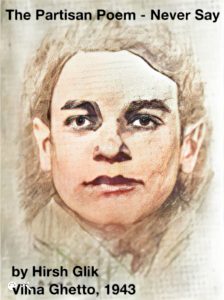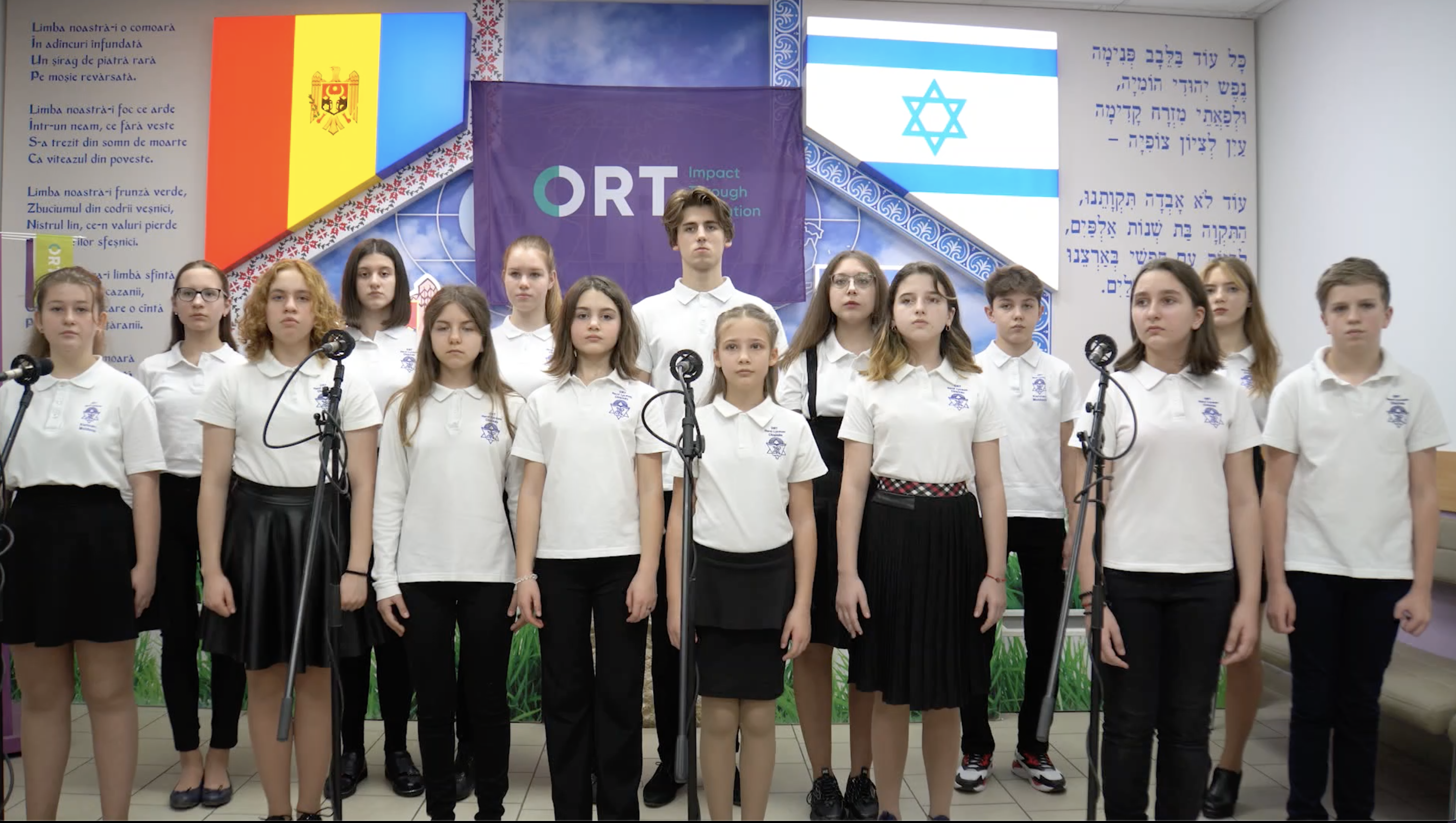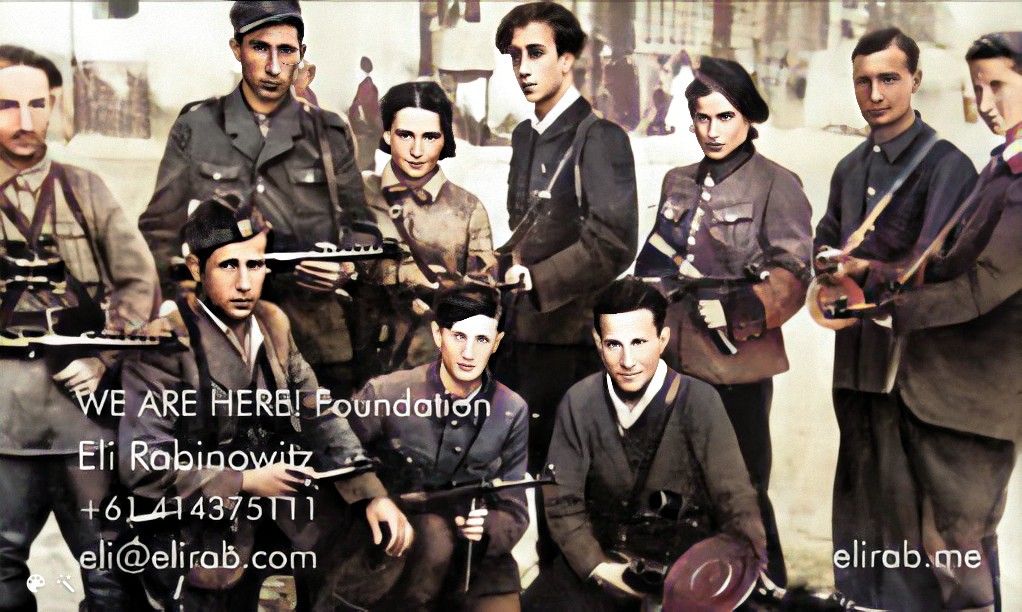Morley Library – City of Bayswater – 12 July 2023
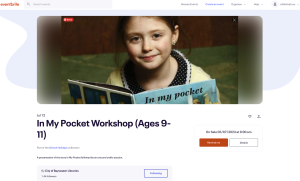
Dianella Library – City of Stirling – 13 July 2023
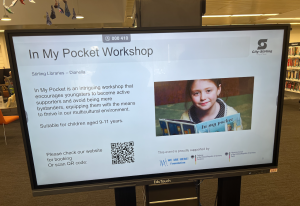
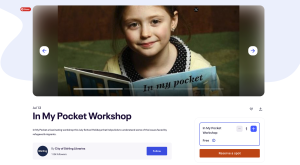
https://www.eventbrite.com.au/e/in-my-pocket-workshop-ages-9-11-tickets-633783532607
More info:
Morley Library – City of Bayswater – 12 July 2023

Dianella Library – City of Stirling – 13 July 2023


https://www.eventbrite.com.au/e/in-my-pocket-workshop-ages-9-11-tickets-633783532607
More info:

3 years ago:

53 years since we matriculated in 1969. Here are some photos from the past decade
Collection of memories from the past 10 years
Sydney




Sea Point

Israel


At SPHS in 2019







Israel 2019

Winchester Mansions Hotel , Sea Point – 2020

Perth, April 2022



Sydney May 2022


KehilaLinks
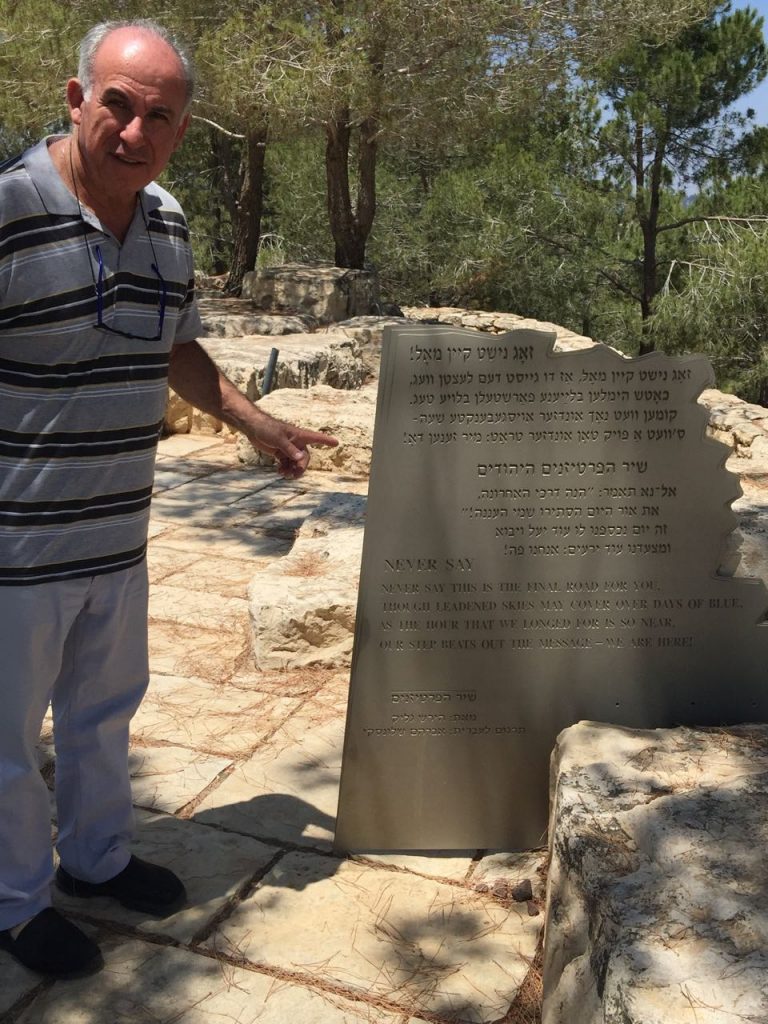
Lithuania Alita (Alytus) Aran (Varena) Balbieriškis Birzh (Birzai) Druskieniki (Druskininkai) Keidan (Kedainiai) Kibart (Kybartai) Kopcheve (Kapciamiestis) Koshedar (Kaisiadorys) Mariampol (M…
Source: elirab.me/kehila
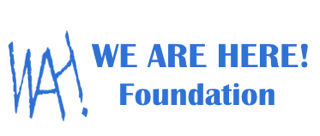
Eli Rabinowitz

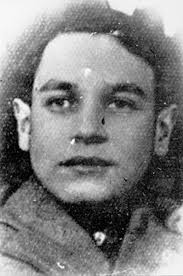

For Upstanders – Founded by Eli Rabinowitz
Source: wah.foundation


Phillip Maisel talks about Hirsh Glik and Zog Nit Keynmol. Melbourne, Australia 22 August 2017
Source: youtu.be/3vYDXOQ_lSk


Introduction to the Partisans’ Song : Phillip Maisel
At most Holocaust commemorations we sing the Partisans’ Song, Zog Nit Kein’mol, composed by Hirsh Glick. Hirsh Glick was my friend, and I was privileged to be the first, together with two others, to whom Hirsh read the words of the song.
My name is Phillip Maisel. I work as a volunteer at the Jewish Holocaust Centre where I am responsible for the testimonies’ department. I am a Holocaust survivor.
In 1941 I was managing a stationery store in Vilna when the Soviet Union occupied the city. At the same time Hirshke Glick was working in a similar store. I was 19; he was 21. Both of us were members of a Soviet trade union and we attended a compulsory weekly Communist indoctrination meetings at 8:00 pm each Thursday evening. Hirshke and I became friends, and after each meeting we would walk along the banks of the Wilia River where Hirshke, already well known for his work as a poet, would discuss his poetry with me.
The two of us were young, and wanted to build a new world.
Hirshke was a very interesting person. He was quiet, dreamy and always very introspective. He told me that he would compose complete poems in his head, as it were, and write them down only when they were finished– and then never change a single word.
In June 1941 the Germans occupied Vilna. In September they created the ghetto. In the ghetto I maintained contact with all my former trade union friends, including Hirshke. He, however, was sent to work at a camp called Rezsche, but brought back later to the Vilna ghetto after that camp was liquidated. It was then that he wrote the Partisans’ Song, Zog Nit Kein’mol.
He first read it to three of us – in a cellar located in Straszuna Street. I was present with my sister, Bella, together with Maishke, who had been the secretary of our trade union. We sat there and Hirshke read to us in the light of a candle placed on top of a box. He subsequently read the poem to fellow members of a literary society. The tune to which he then sung the words was composed by Russian Jewish composers, Dmitri and Daniel Pokrass.
On 1 September 1943, on the first day of liquidation of Vilna Ghetto I was deported to Estonia. I was attached to a mobile garage and was working as an automotive electrician for the Germans. The workshop travelled all over Estonia.. One day we were sent to a camp – Goldfilz – where I stayed for two nights and where Hirsh Glick was imprisoned. Even in camp he was respected as a poet. When we met, the first question I asked Hirsh was: “How can I help you?” His response was: “I need freedom.” When I replied that unfortunately I could not give him freedom, he asked me if I could by any chance give him a spoon. In camp, a spoon was a treasure. It enabled him to eat his soup, the main meal in the camp. I gave him my spoon which had a sharpened handle and which could serve as a knife.
During his captivity Hirsh continued to compose songs and poems. His death, however, was always shrouded in mystery. The historical records state that, In July 1944, with the Soviet Army approaching, Glick escaped, that he was never heard from again, and that it was presumed he had been captured and executed by the Germans, reportedly in August 1944. However, as a volunteer at the Jewish Holocaust Centre where I record Holocaust survivors’ testimonies, I interviewed a Mr Samuel Drabkin in 1993. He told me that he and his four brothers were in the camp with Hirshka. He described to me in detail how Hirshka perished. One night, he said, while returning from work to the camp, Hirsh and his fellow prisoners, among them Samuel Drabkin and his four brothers, noticed that there was a hive of activity in the camp and the Camp Commandant was drunk. Forty prisoners, including Hirsh Glick, entered a toilet block, climbed through the window, broke through the camp’s wire enclosure and escaped. Estonian guards fired at them, and of the 40 escapees, only 14 survived. Hirsh Glick, however, did not survive: Mr Drabkin’s brother saw him shot and killed.
It has been said that Hirsh Glick wrote the Partisans’ Song while the Warsaw Ghetto uprising was taking place. I believe, however, that the song was actually written for a specific partisan – a young Jewish partisan girl with whom Hirshke was in love. But no matter. Hirshke’s song – the Partizaner Lid – sung so long ago by Jews in the Vilna ghetto, has become the anthem of those of us who have survived the Shoah.
Zog Nit Kein’mol – es vet a poyk ton undzer trot: mir zaynen do! “Our step beats out the message: we are here!”
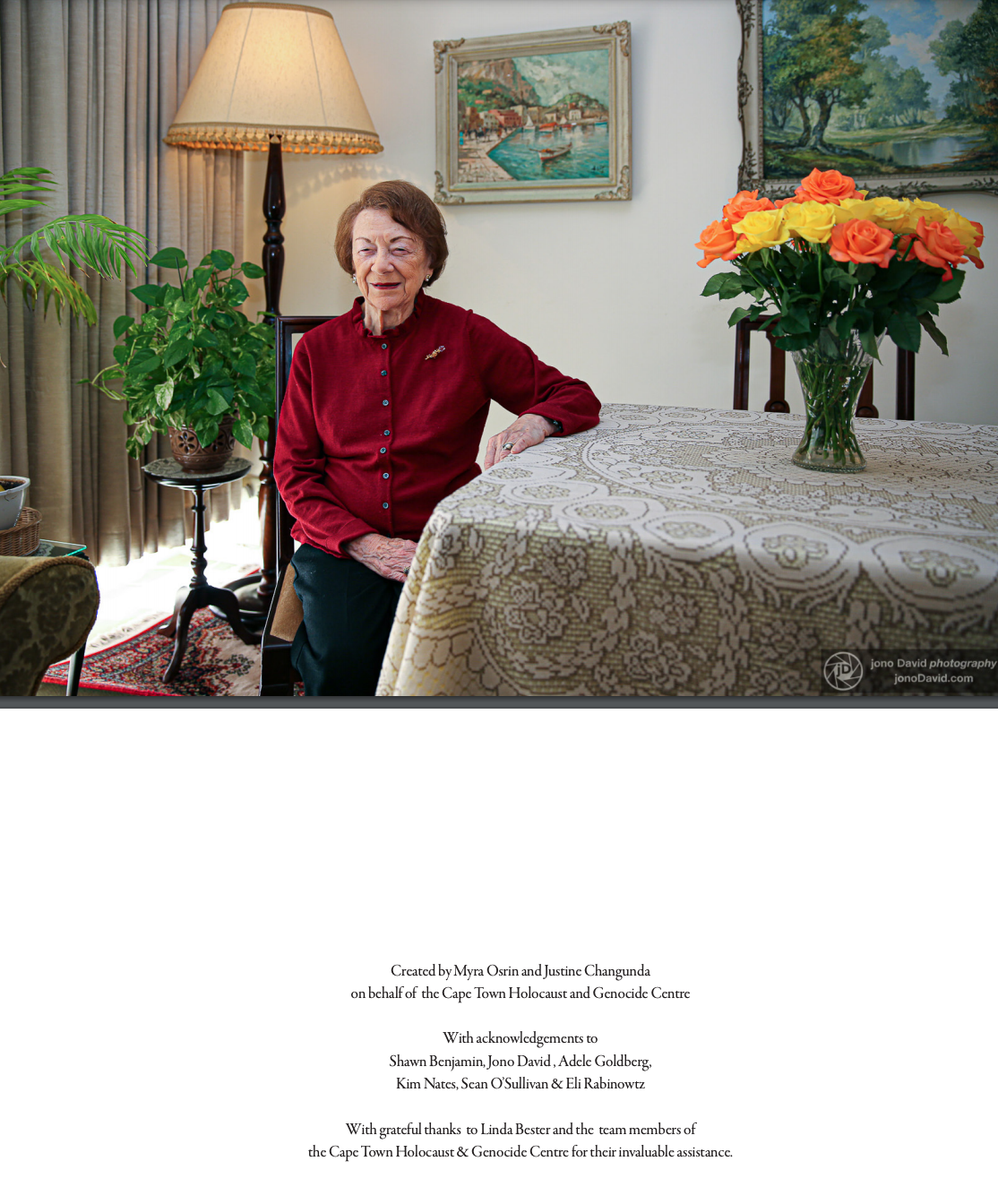
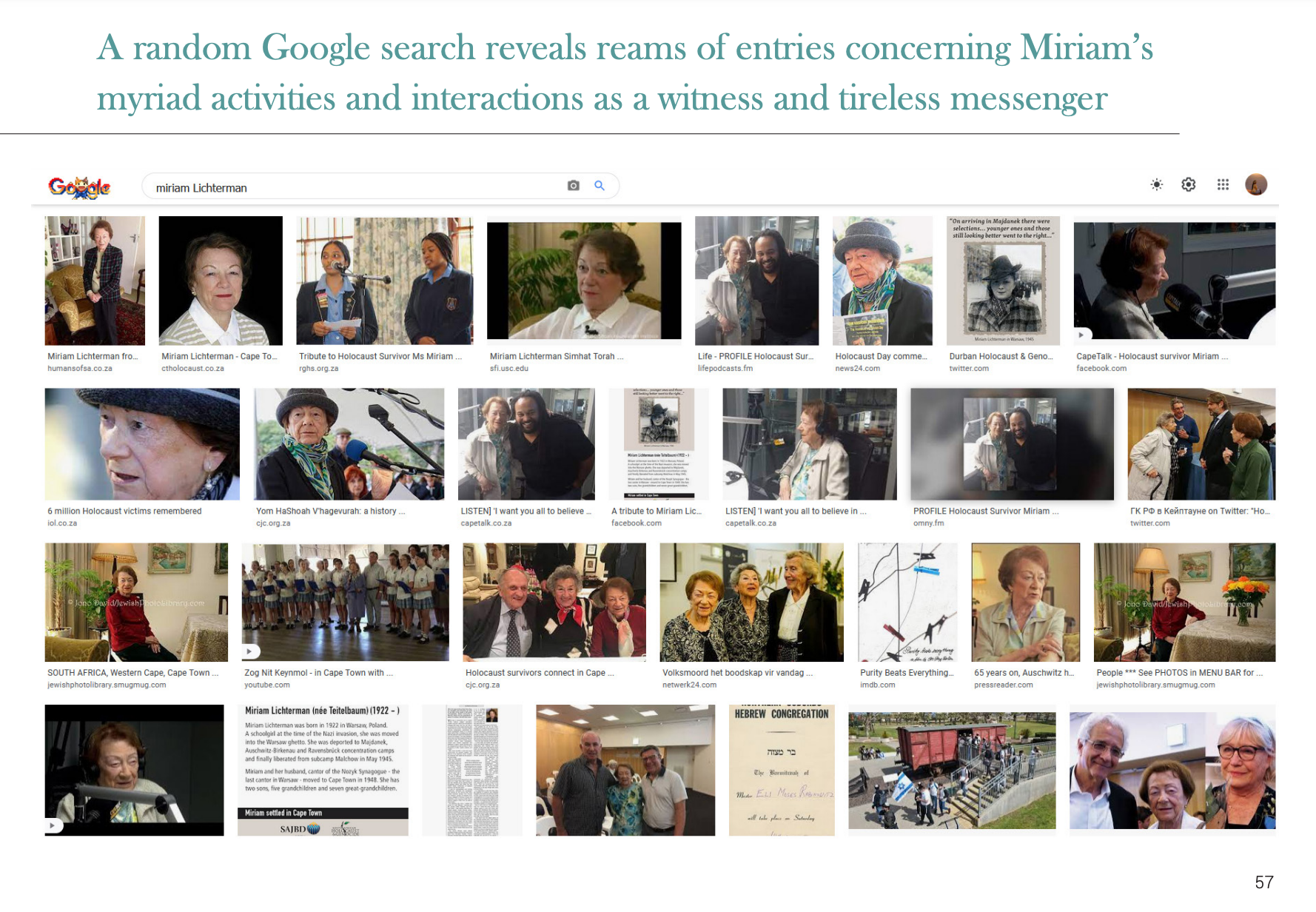
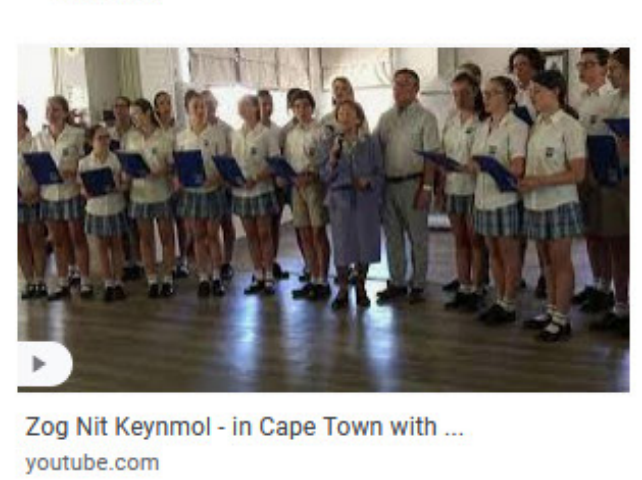
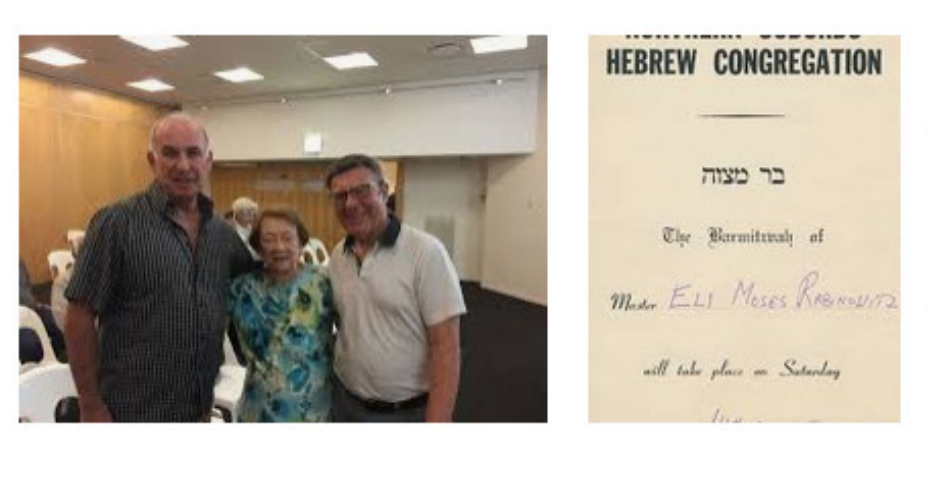
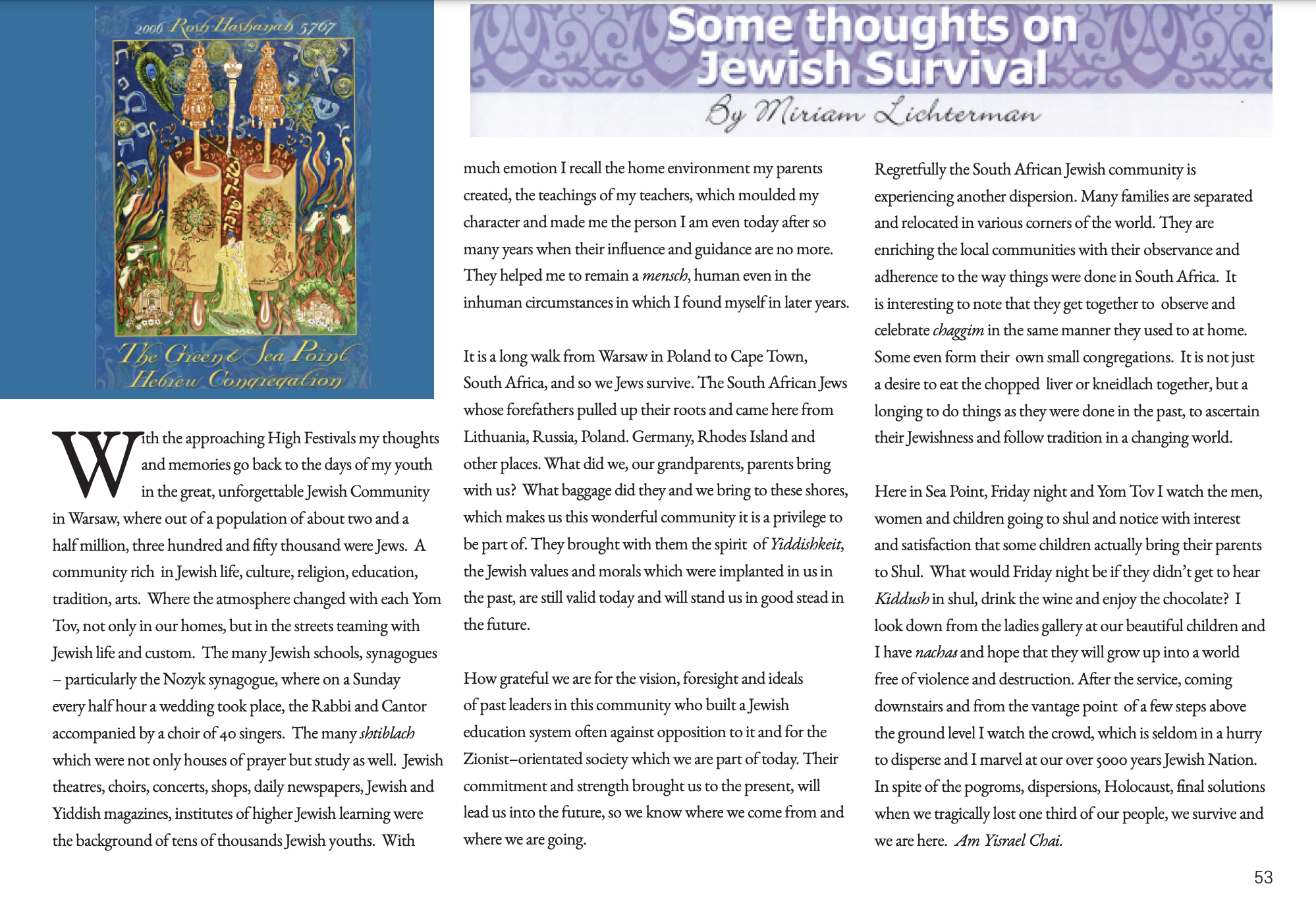
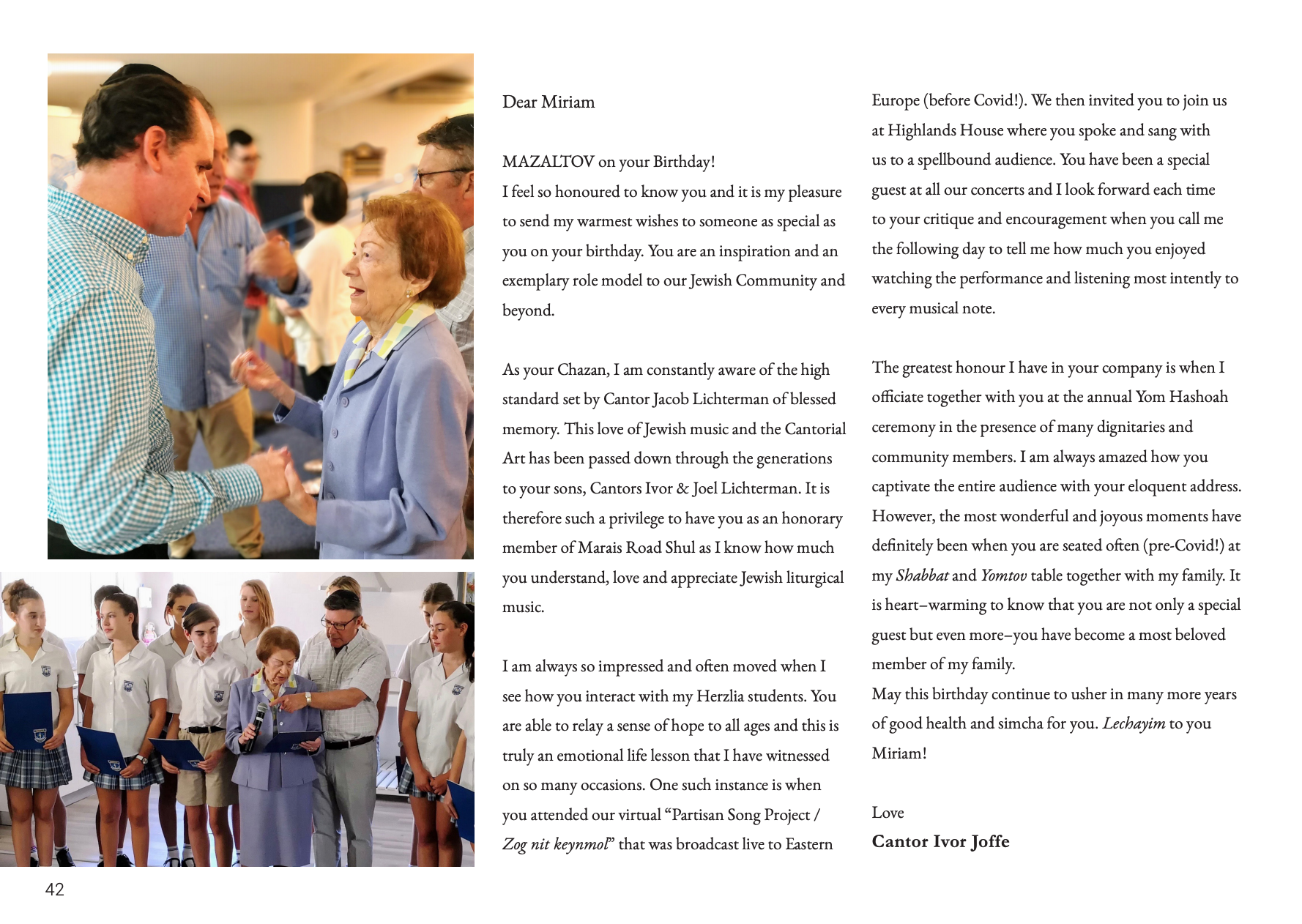
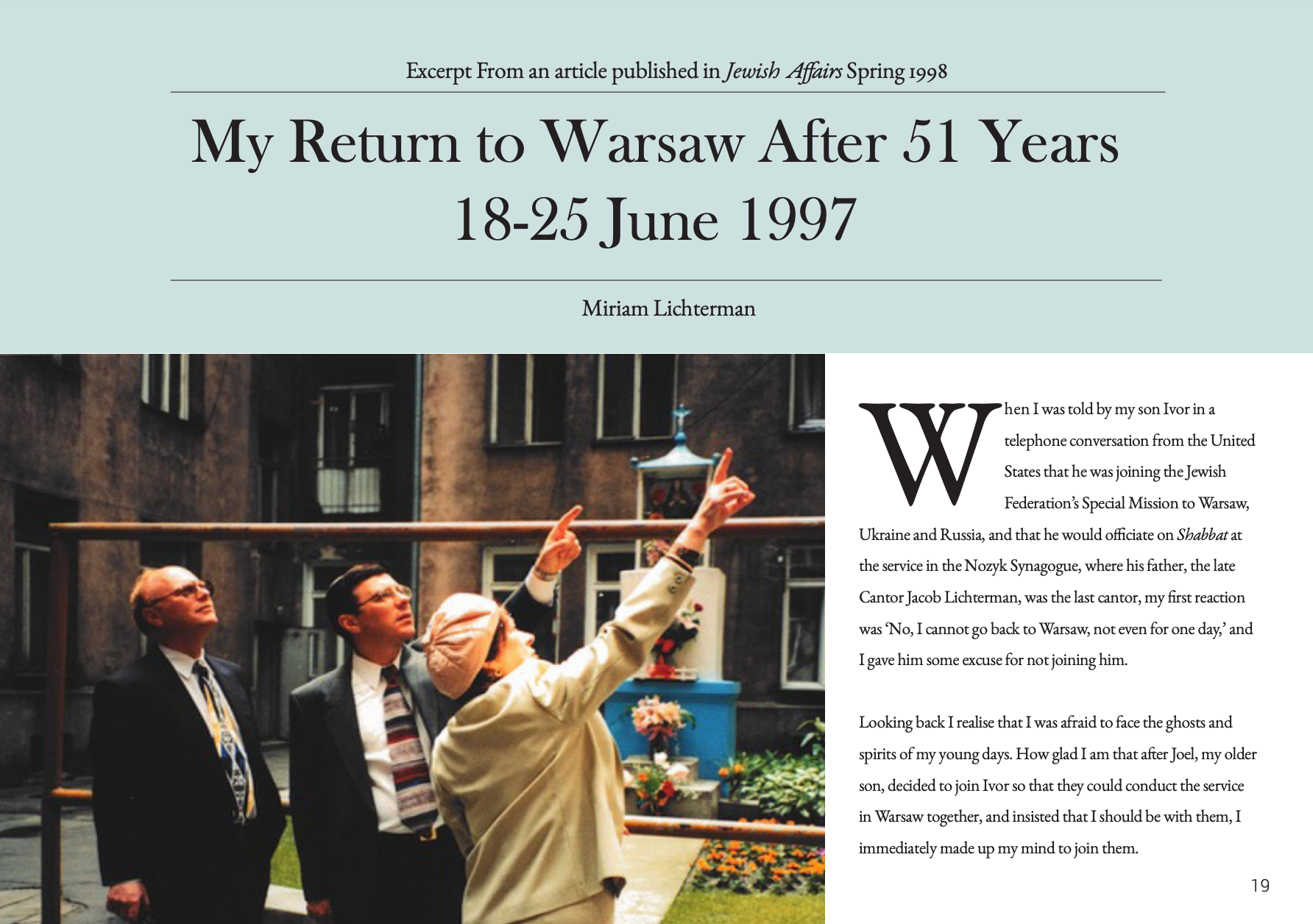
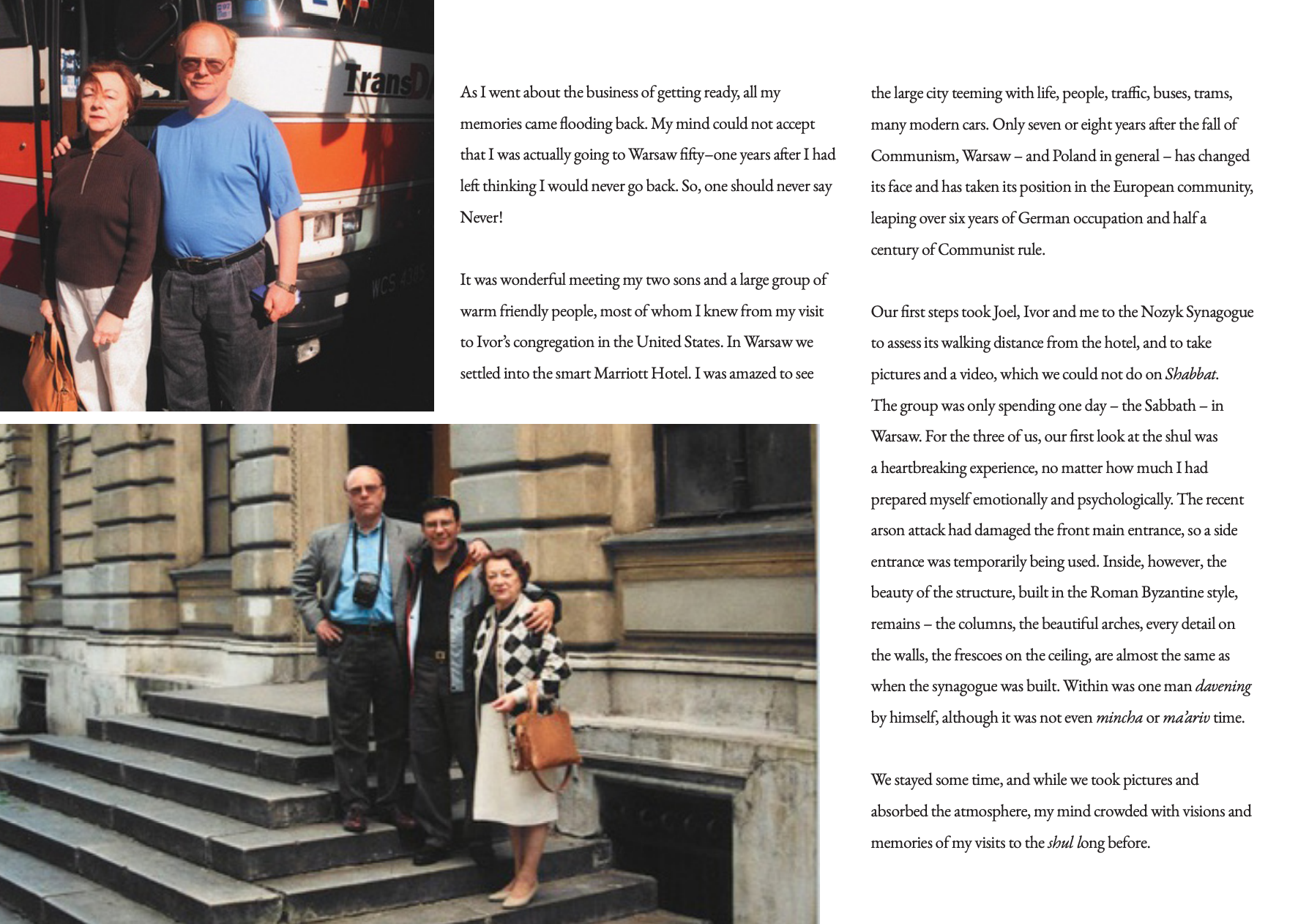
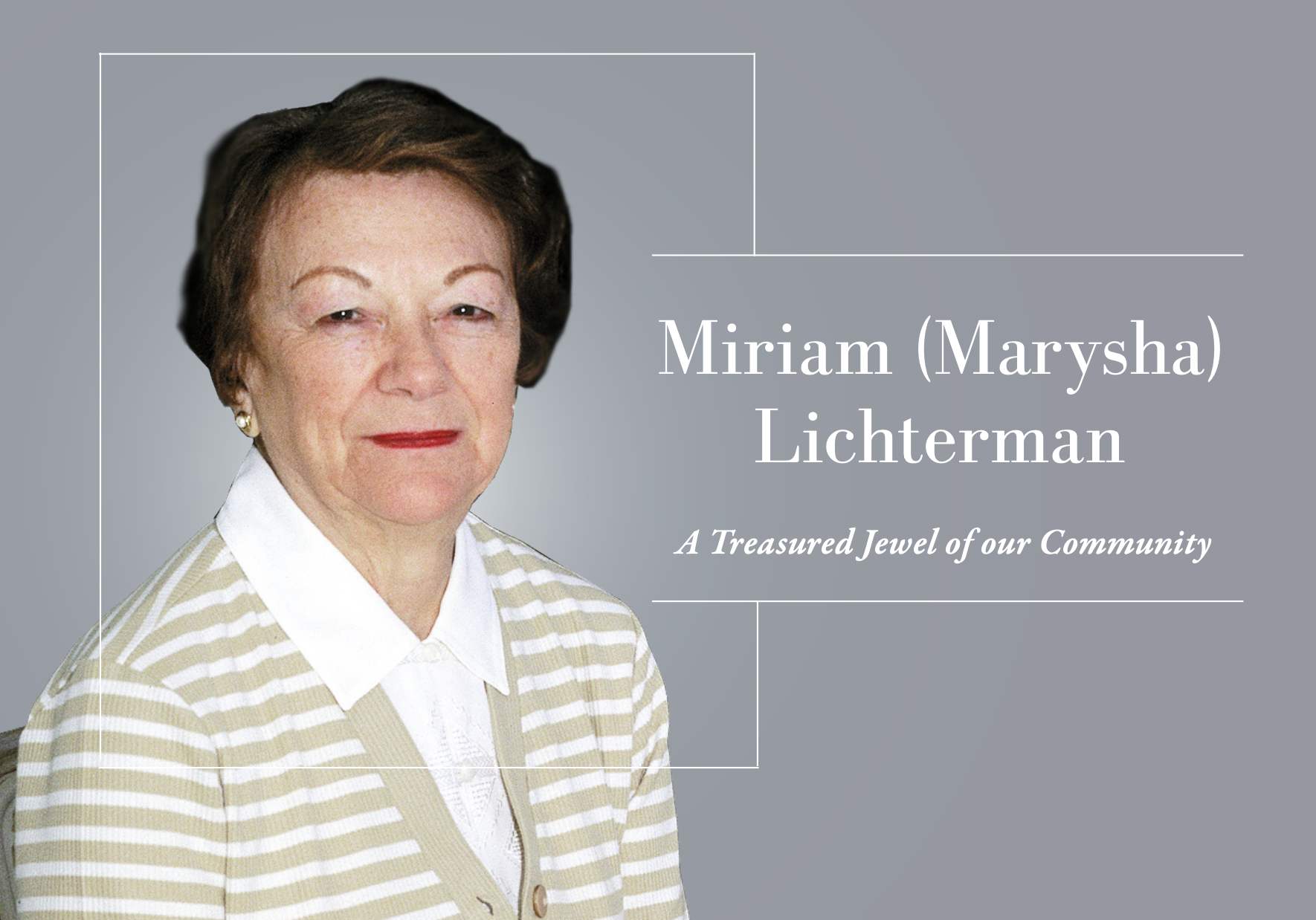
Link to the full document:
https://drive.google.com/file/d/189W63DXp6ahNxXCvrBP6bjiaztogwc7W/view?usp=sharing
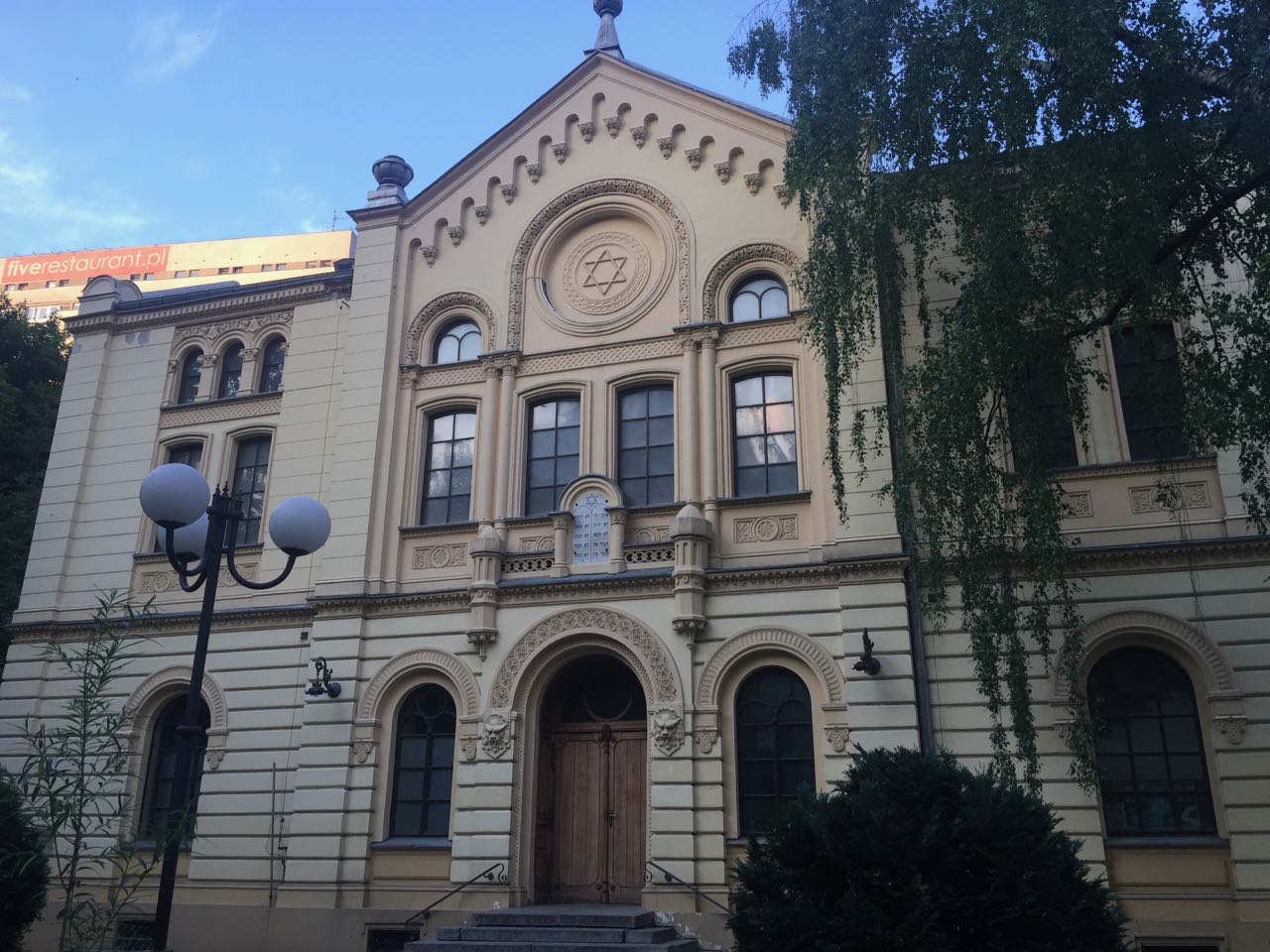
The last cantor at the Nozyk before the Holocaust
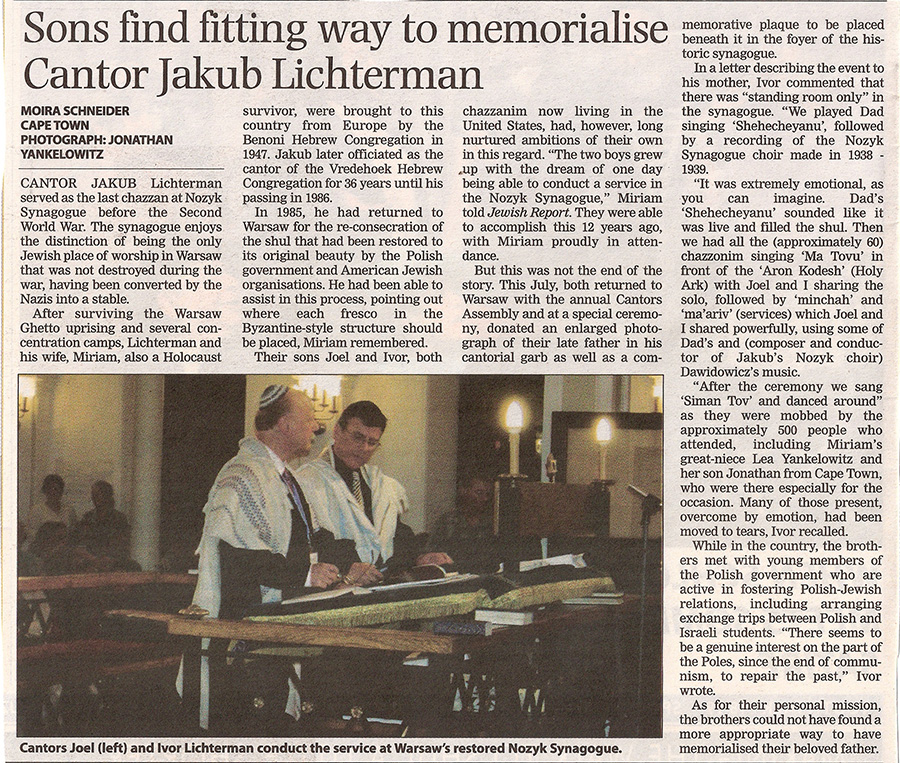
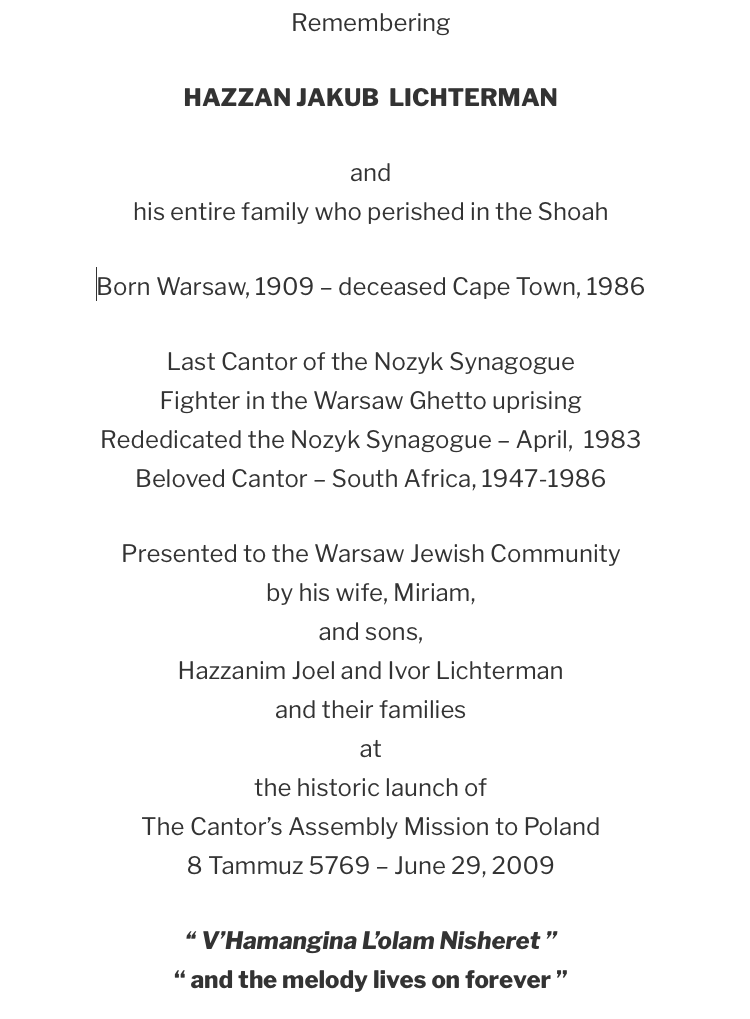
The visit of the Yosef Shlomo Kahaneman, the Ponevezh’s Rav to Cape Town in 1953. My zaida – Rev Nachum Mendel Rabinowitz – seated third from the left. Cantor Jakub Lichterman 2nd from the bottom right.
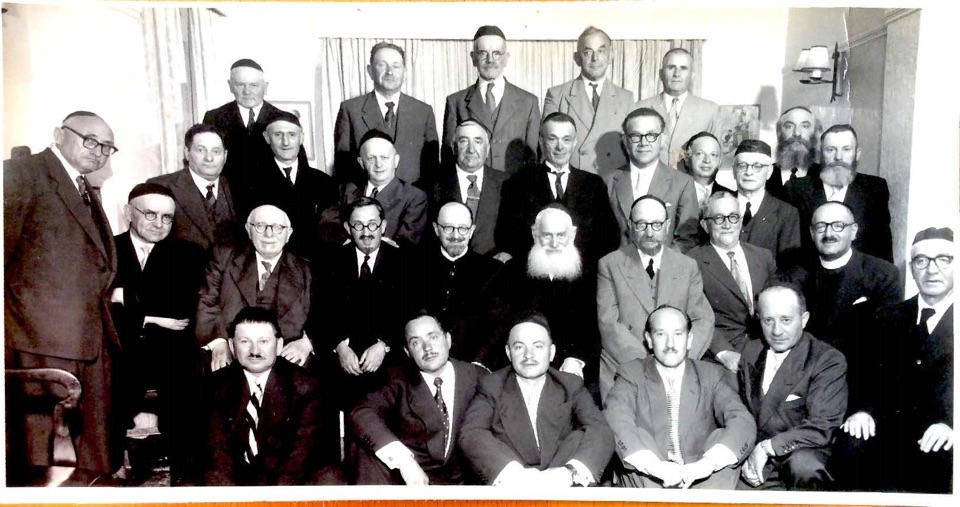
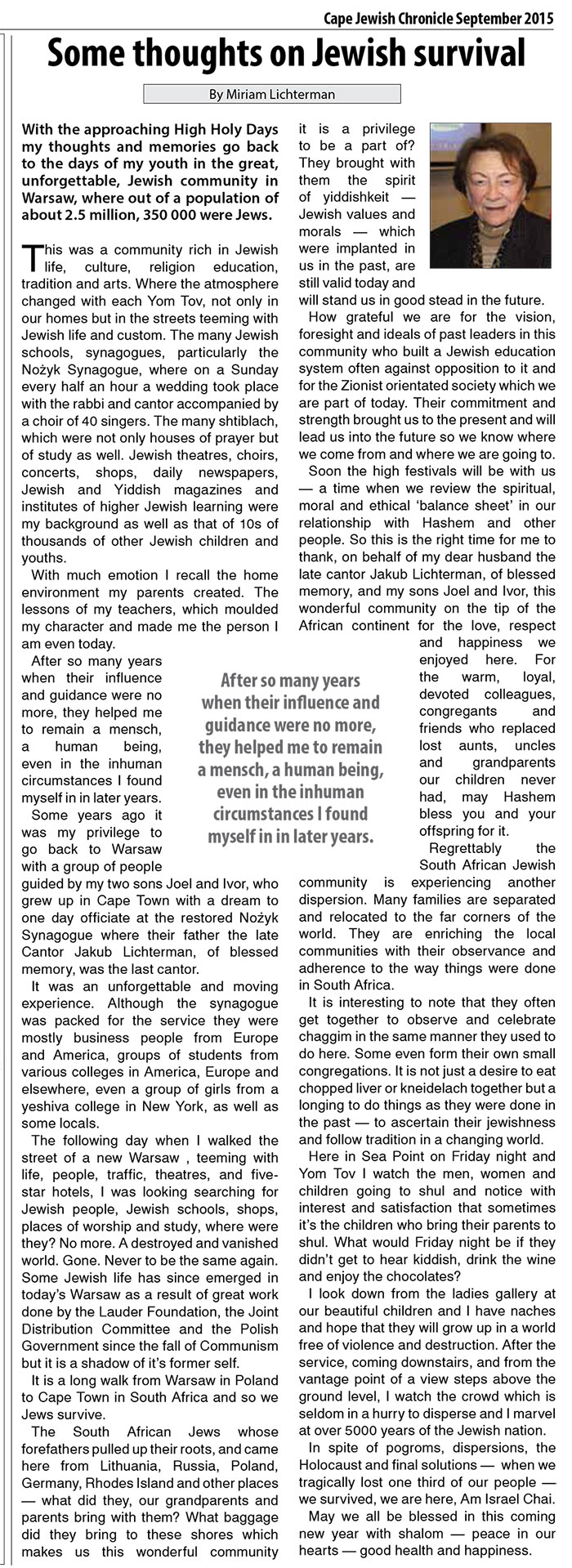
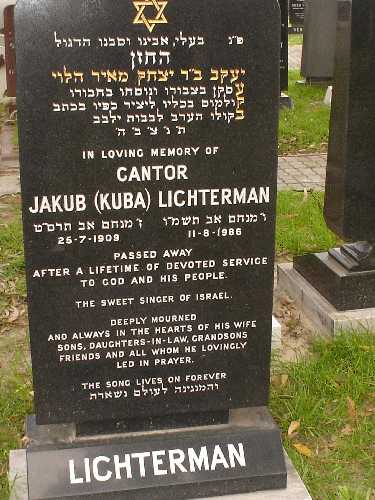
Video

8 August 1993 Cape Town South Africa – edited speech
Source: youtu.be/RGsYvLVsSpc
Full video here (1 hour 19 mins)

The Cape Town Holocaust Centre
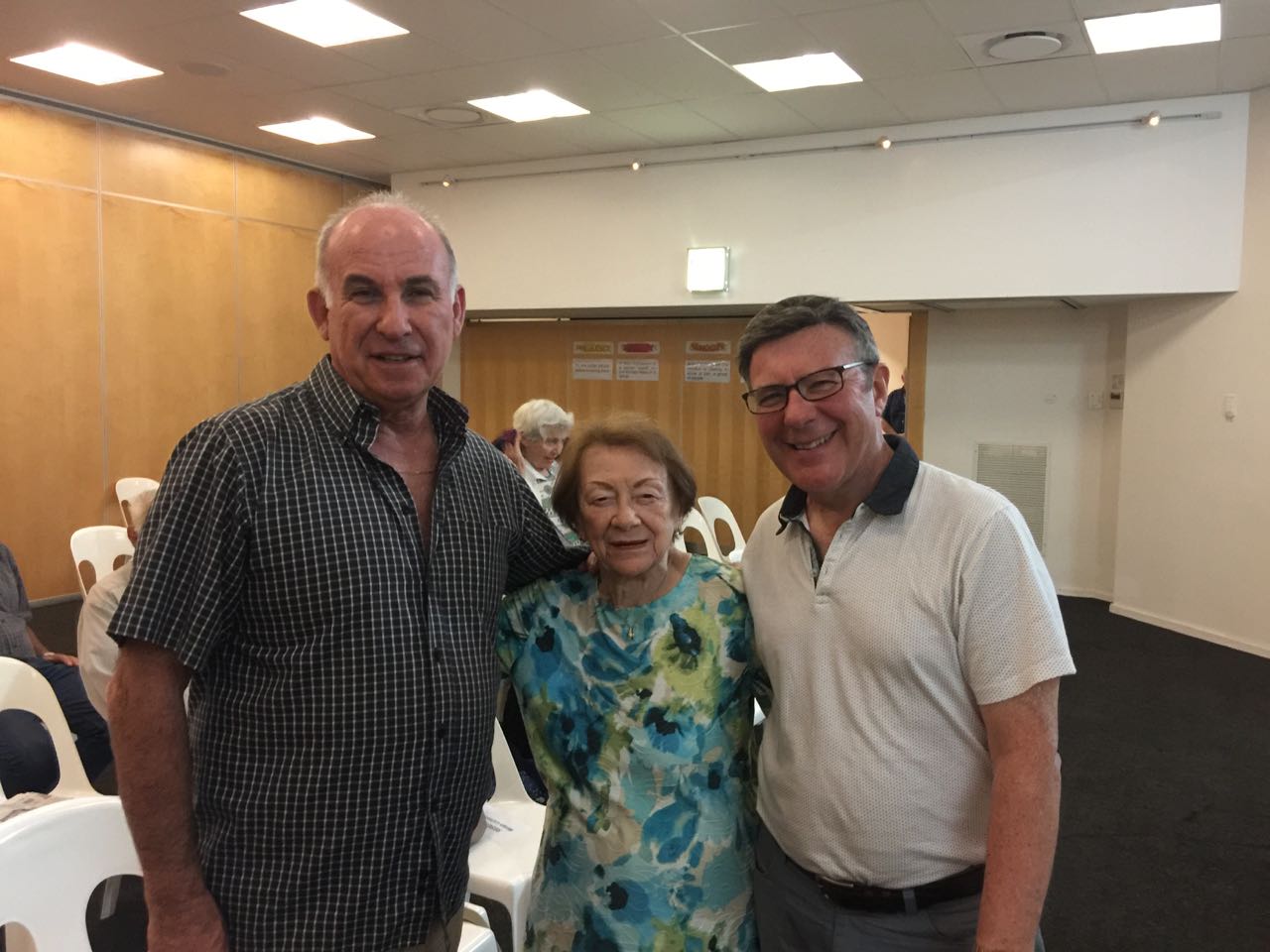
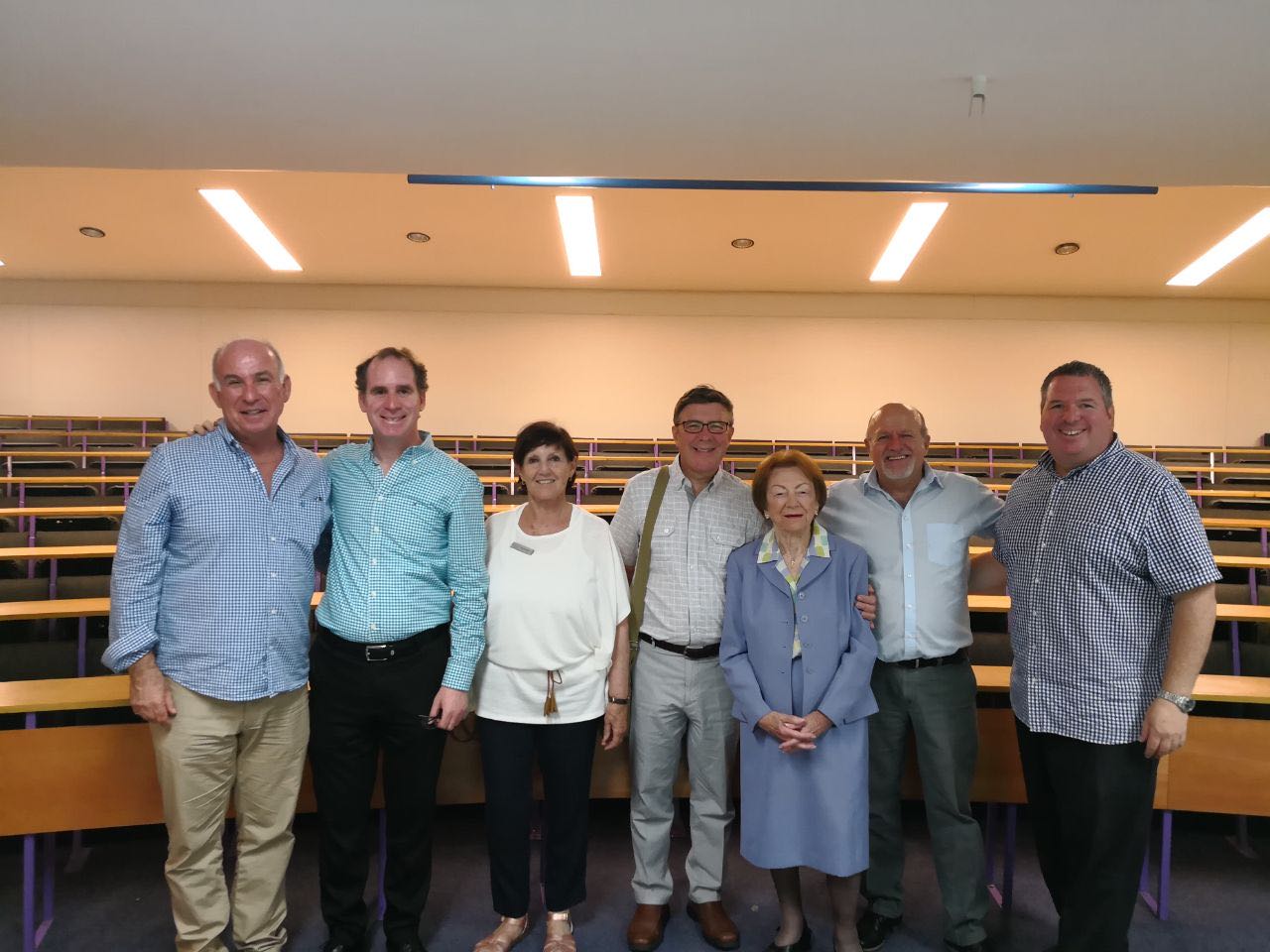
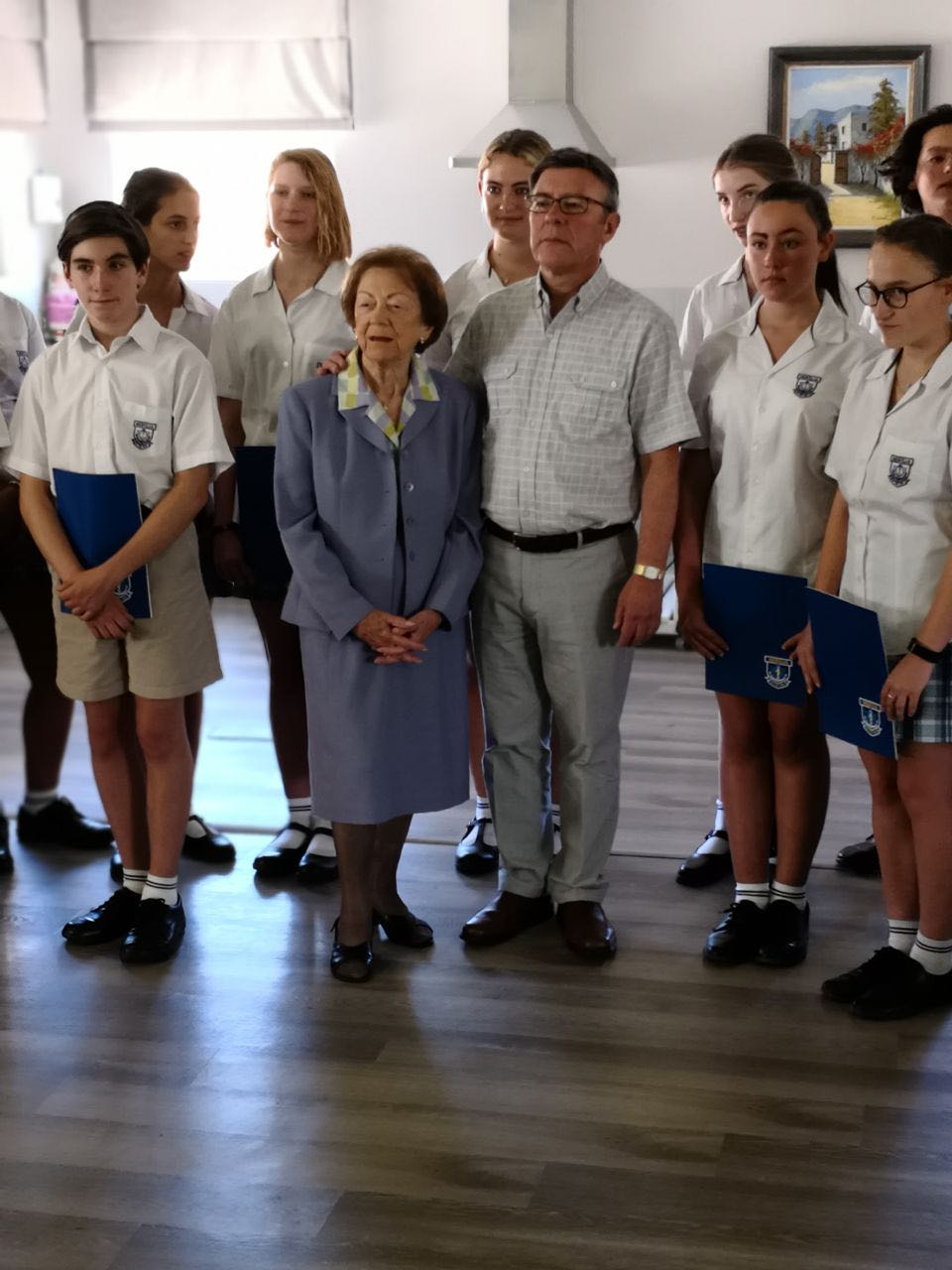
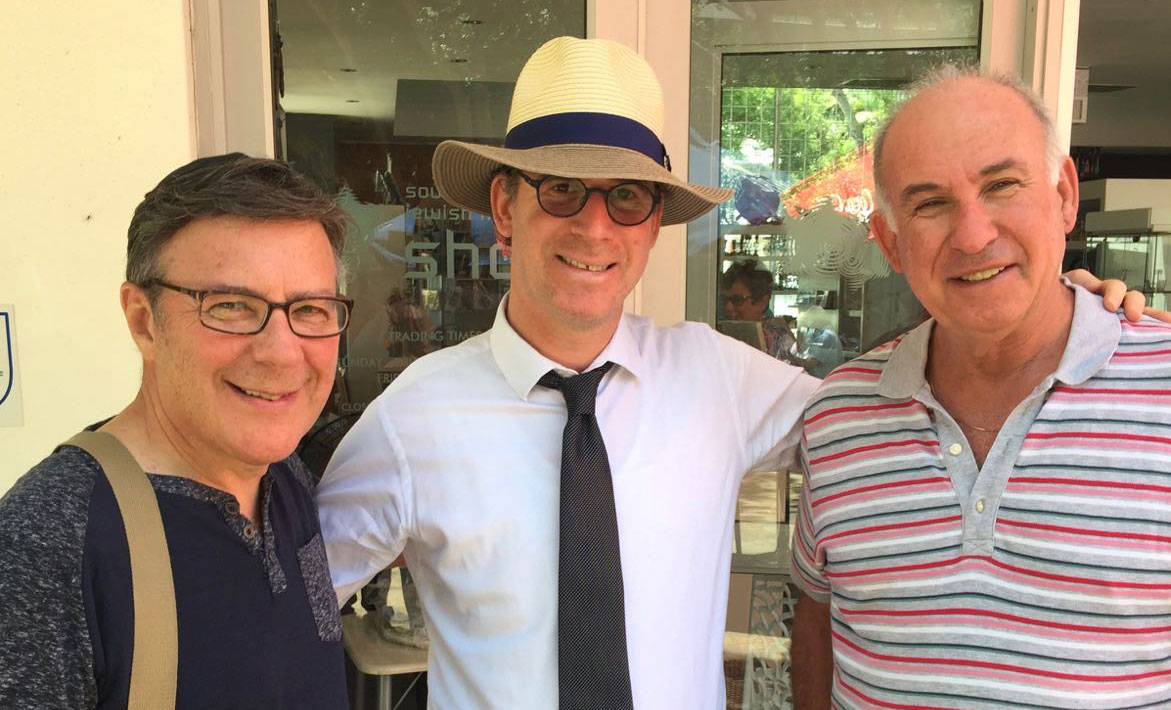
Video

Every year on Yom Hashoah the Day of Remembrance of the Holocaust and Heroism, Holocaust survivors and Jewish communities sing the song Zog Nit Keynmol
Source: youtu.be/tnaCtuqVBgg
You Are Invited |
The IAJGS invites you — and encourages the entire genealogical community familiar with researching Jewish ancestry — to review the Draft DoJR Record Type Taxonomy for Jewish Genealogy and provide comments.
Two Week Comment Period
Mon 5 July – Sun 18 July |

Source: dojrww.org/taxonomy/?fbclid=IwAR1fbkGouYjrpUaTU6MGr-iwkFX4lEKy3gMovKBFcFj_PdtbryewzNhoEVA
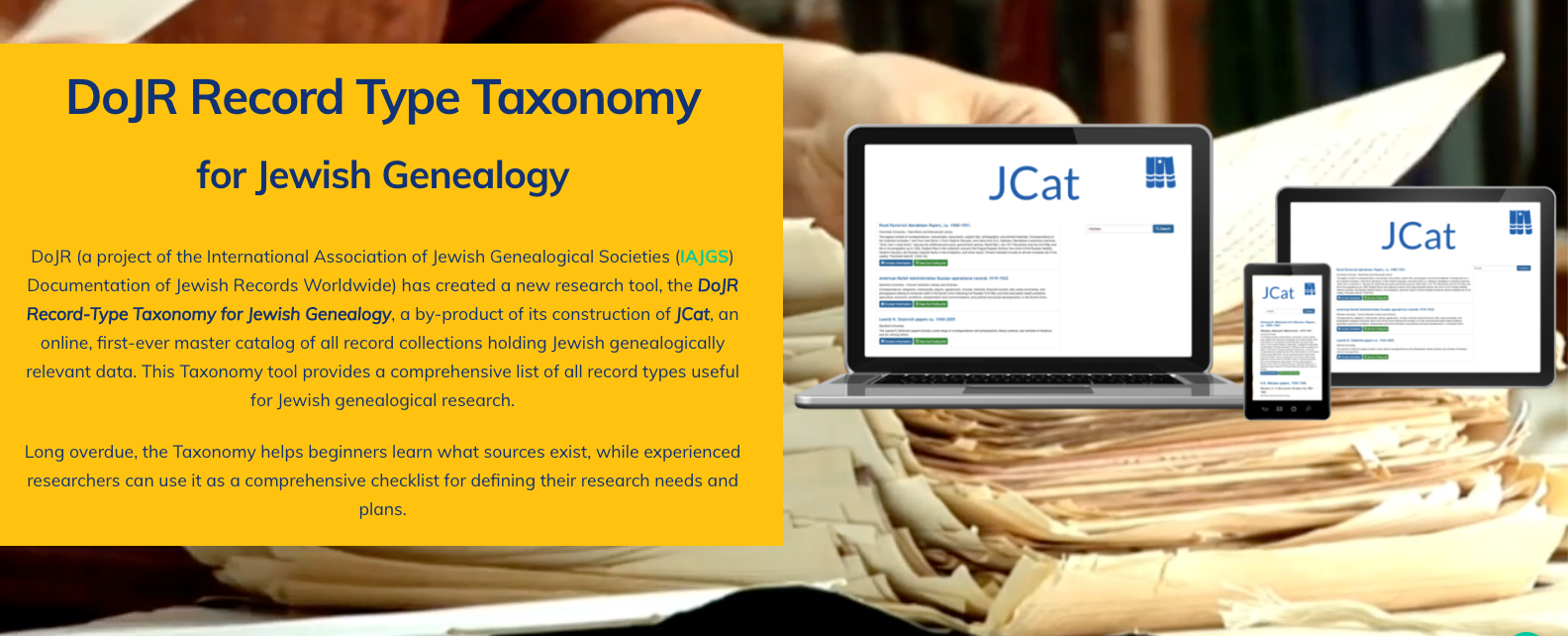
 Online Jewish genealogy resources to be focus of Jewish Genealogical Society talk on 23 May 2021
Online Jewish genealogy resources to be focus of Jewish Genealogical Society talk on 23 May 2021
Online Jewish genealogy resources to be focus of Jewish Genealogical Society talk on 23 May 2021
Eli Rabinowitz, a board member of the IAJGS who lives in Australia and is from South Africa, will speak on “Journeys from Shtetl to Shtetl” for the Sunday, 23 May 2021, virtual meeting of the Jewish Genealogical Society of Illinois. His live streaming presentation will begin at a special time: 7:30 pm CST.
8:30 pm ES 5:30 pm WST
Monday 24 May 2021: 10:30 am Sydney, 8:30 am Perth, 3:30 am Israel, 2:30 am South Africa, 1:30 am UK
Registration https://jgsi.org/event-3988686
After you register, you will be sent a link to join the meeting. This webinar will be recorded so that JGSI’s paid members who are unable to view it live will be able to view the recording later.
For more information, see https://jgsi.org or phone 312-666-0100.

In his presentation, Rabinowitz will explain how to trace our past and plot our future, using 88 KehilaLinks, over 800 WordPress blog entries, Facebook posts, and other social media. He will also discuss heritage travels in the actual and virtual worlds.
In his talk, Eli will describe special events including commemorations and reunions of descendants. “An important activity is to visit a local school—either physically or online, to engage with students, especially in towns where a few buildings with Jewish symbols, or cemeteries that often contain illegible matsevot, are the only tangible memories of a once thriving community,” he said.
It is also important that family histories should be documented and shared at the same time as the special events, Eli said.
Examples of such recent ceremonies were the Bielski partisans’ descendants’ reunion in Naliboki and Navahrudak, Belarus; the new memorial for victims of the massacre that took place near Birzai, Lithuania; and the groundbreaking ceremony for the Lost Shtetl Museum in Šeduva, Lithuania.

Eli Rabinowitz was born in Cape Town, South Africa, and has lived in Perth, Australia, since 1986. He has researched his family’s genealogy and associated Jewish cultural history for over 30 years. Eli has travelled extensively, writing about Jewish life, travel, and education on his website, Tangential Travel and Jewish Life (http://elirab.me). He writes and manages dozens of JewishGen KehilaLinks and more than 750 WordPress blog posts. His articles have appeared in numerous publications, including Avotaynu: The International Review of Jewish Genealogy. Eli has lectured internationally at educational institutions, commemorative events, at IAJGS and other conferences, and online.
He is a board member of the IAJGS—The International Association of Jewish Genealogical Societies, an independent non-profit umbrella organization that coordinates an annual conference of 84 Jewish genealogical societies worldwide.
Eli also advises on Litvak and Polish heritage tours.
He writes and manages 88 KehilaLinks—Jewish websites for JewishGen.org, the world’s largest Jewish genealogical organization, with a database of 500,000 followers. His KehilaLinks include sites in Poland, Lithuania, Latvia, Estonia, Belarus, Germany, Russia, China, Mauritius, Mozambique, South Africa and Australia.
The Jewish Genealogical Societyof Illinois is a non-profit organization dedicated to helping members collect, preserve, and perpetuate the records and history of their ancestors. JGSI is a resource for the worldwide Jewish community to research their Chicago-area roots. The JGSI motto is “Members Helping Members Since 1981.” The group has more than 300 members and is affiliated with the International Association of Jewish Genealogical Societies.
JGSI members have access to useful and informative online family history research resources, including a members’ forum, more than 65 video recordings of past speakers’ presentations, monthly JGSI E-News, quarterly Morasha JGSI newsletter, and much more. Members as well as non-members can look for their ancestors on the free searchable JGSI Jewish Chicago Database.

New Memorial Orla Poland 2021
Perth, 14 April 2021
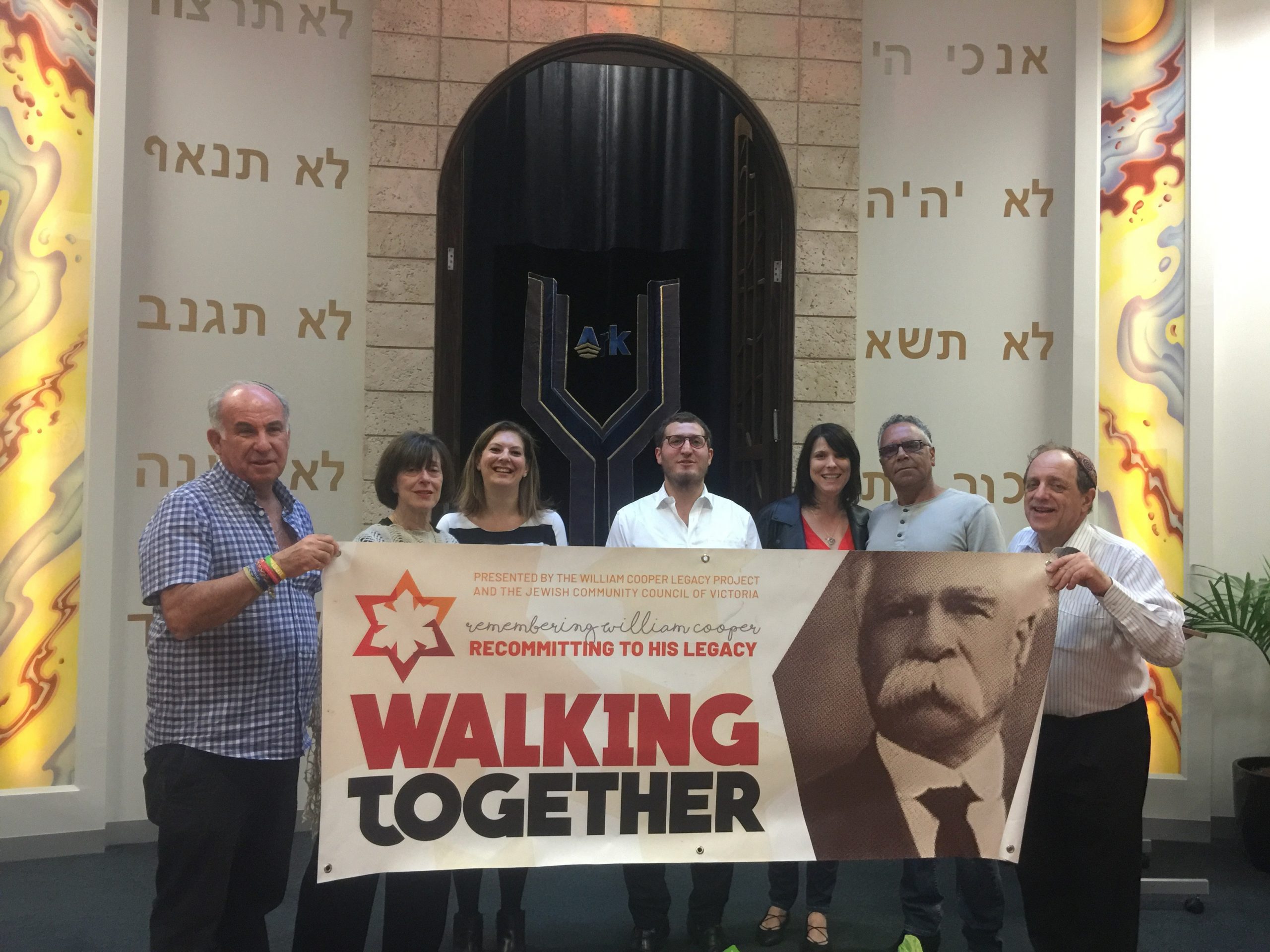 The Ark, Melbourne
The Ark, Melbourne
Video from Seattle

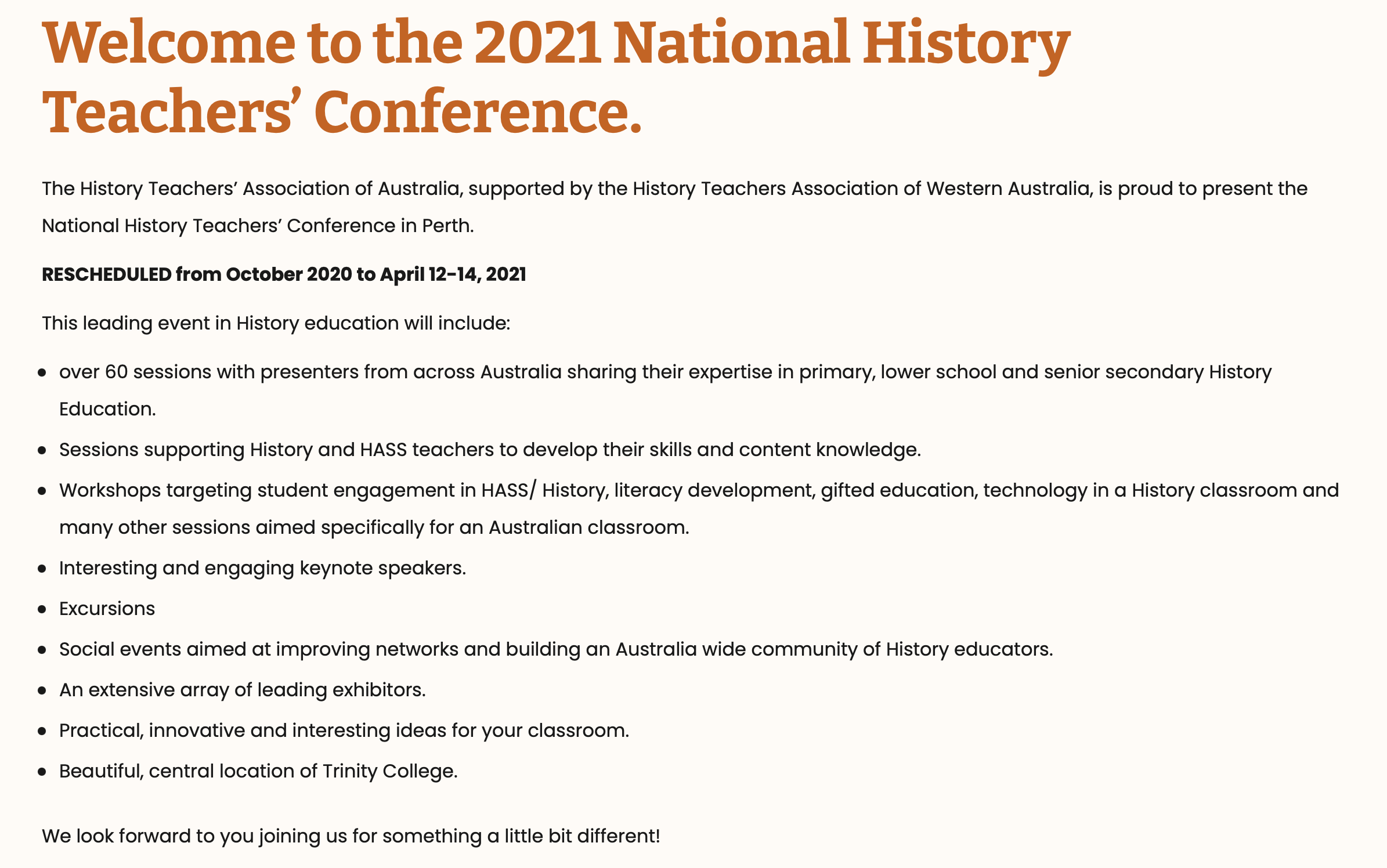

 William Cooper’s family, Richmond FC, Melbourne
William Cooper’s family, Richmond FC, Melbourne

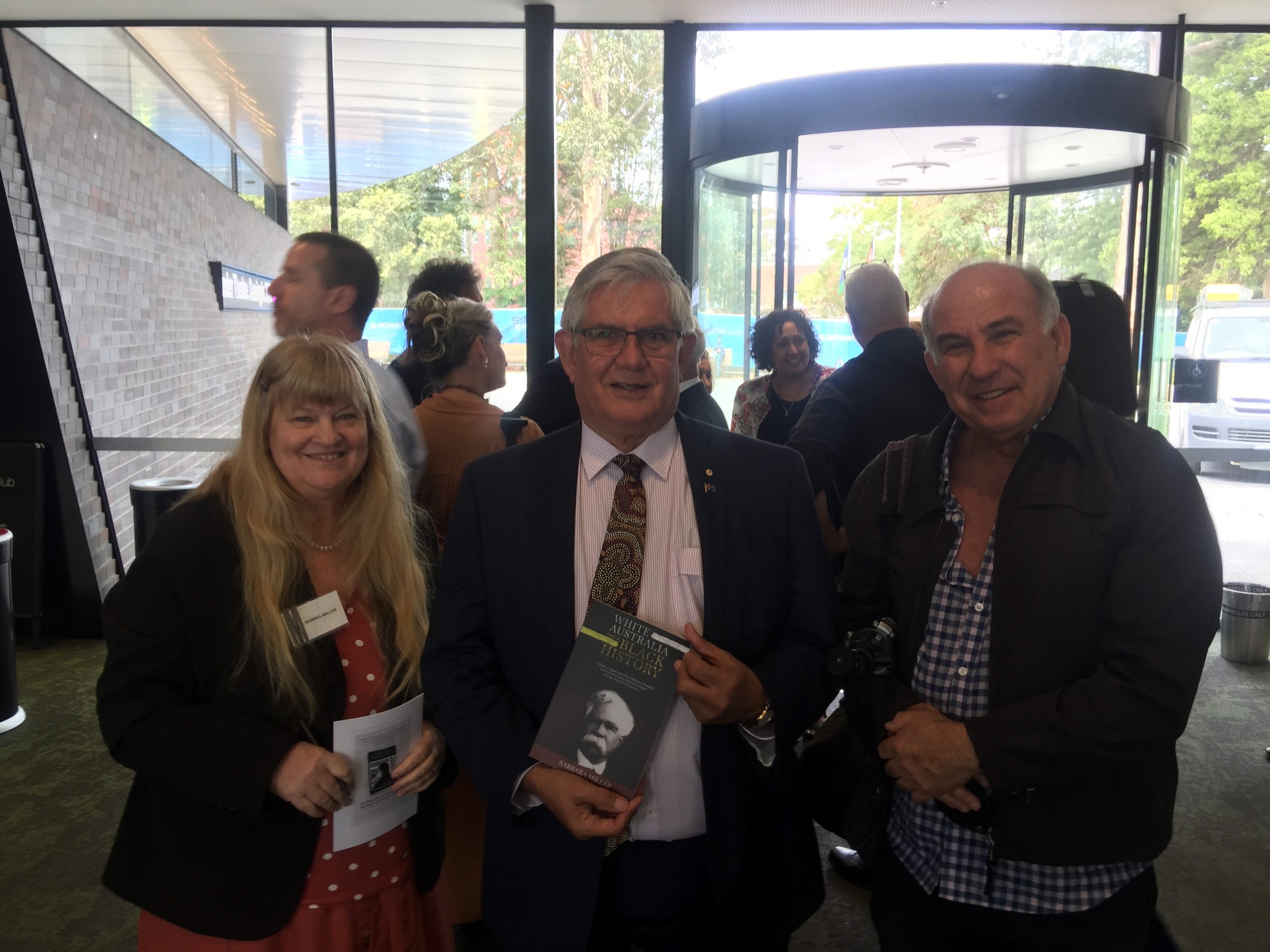
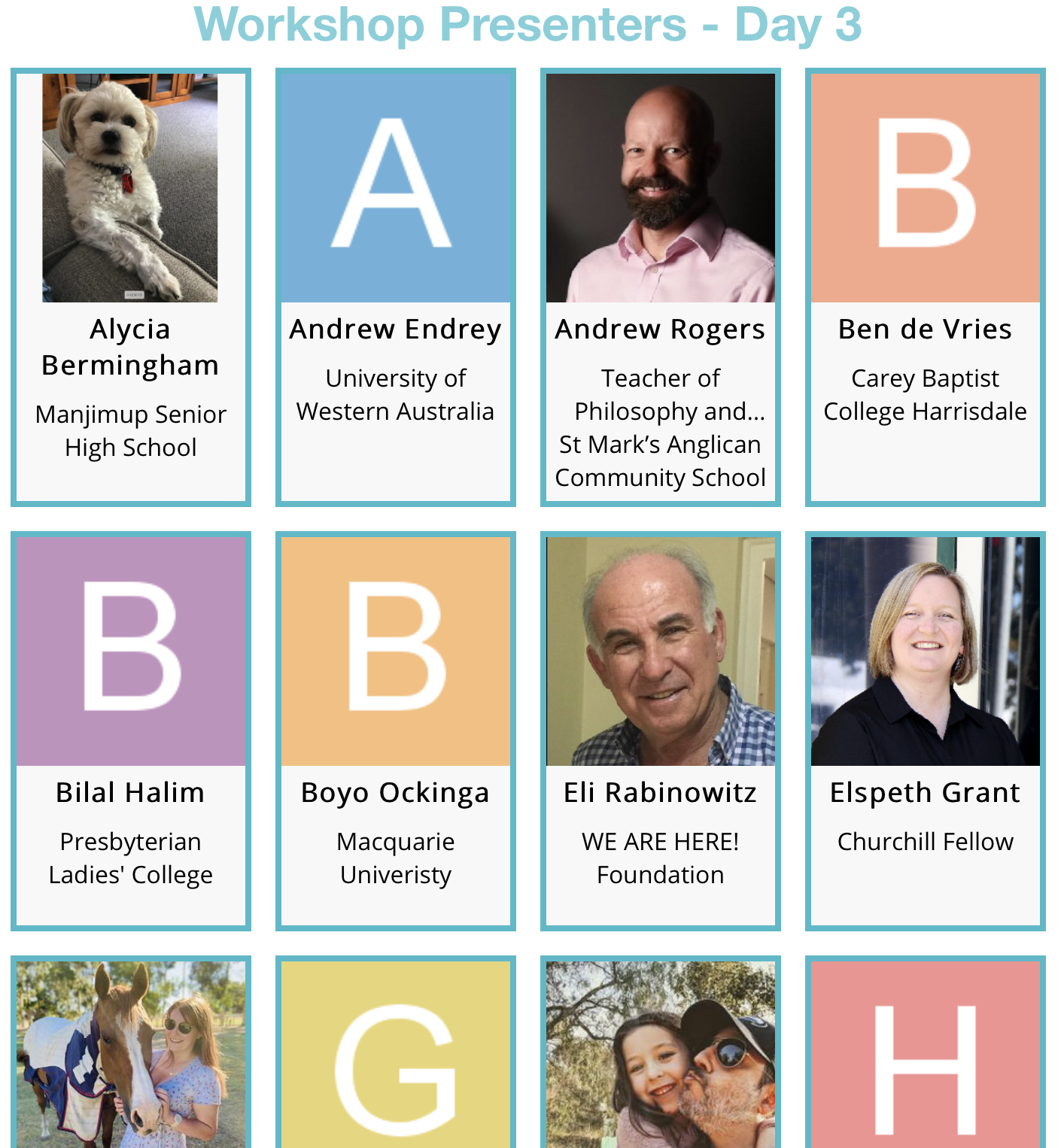
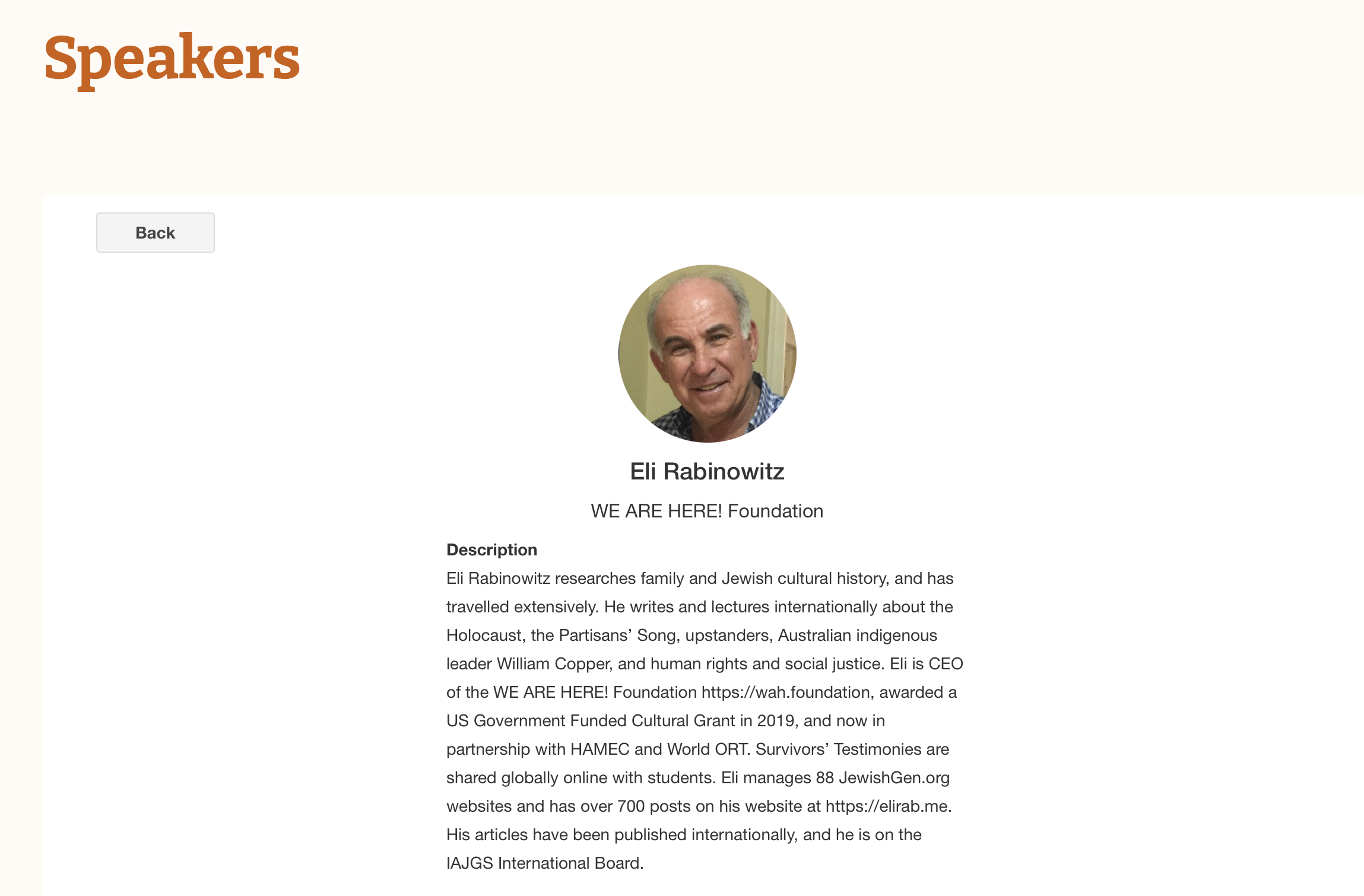
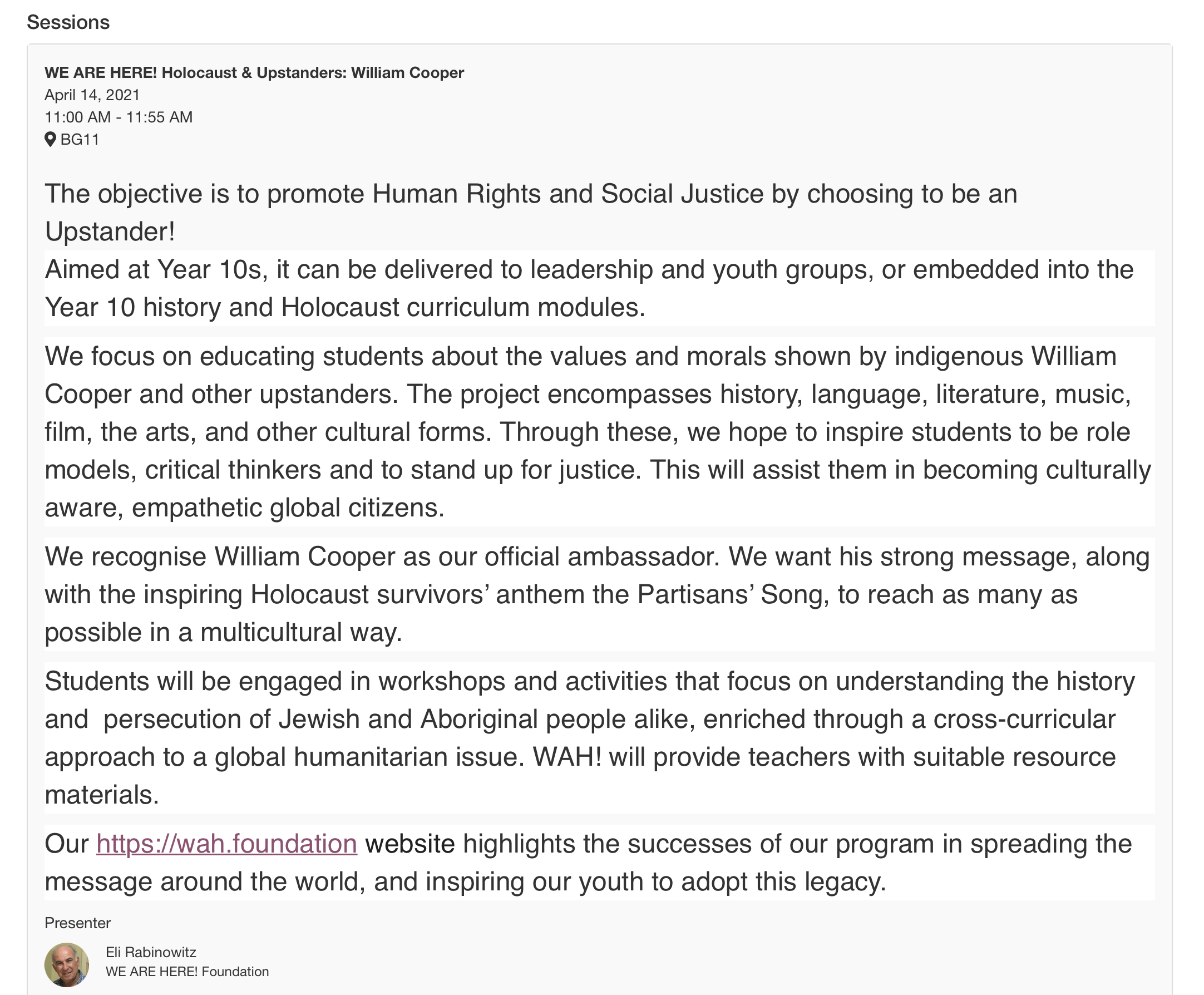
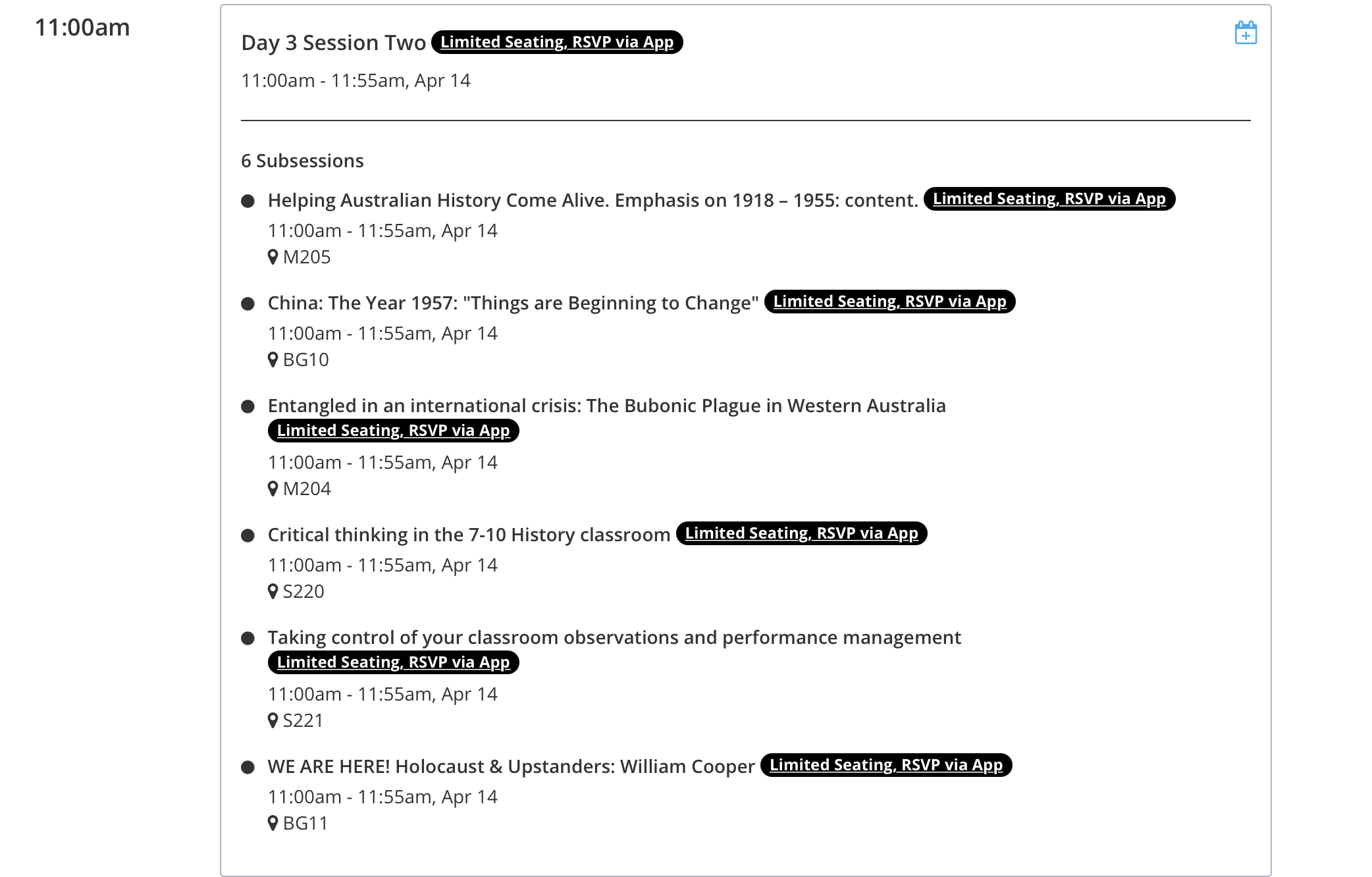
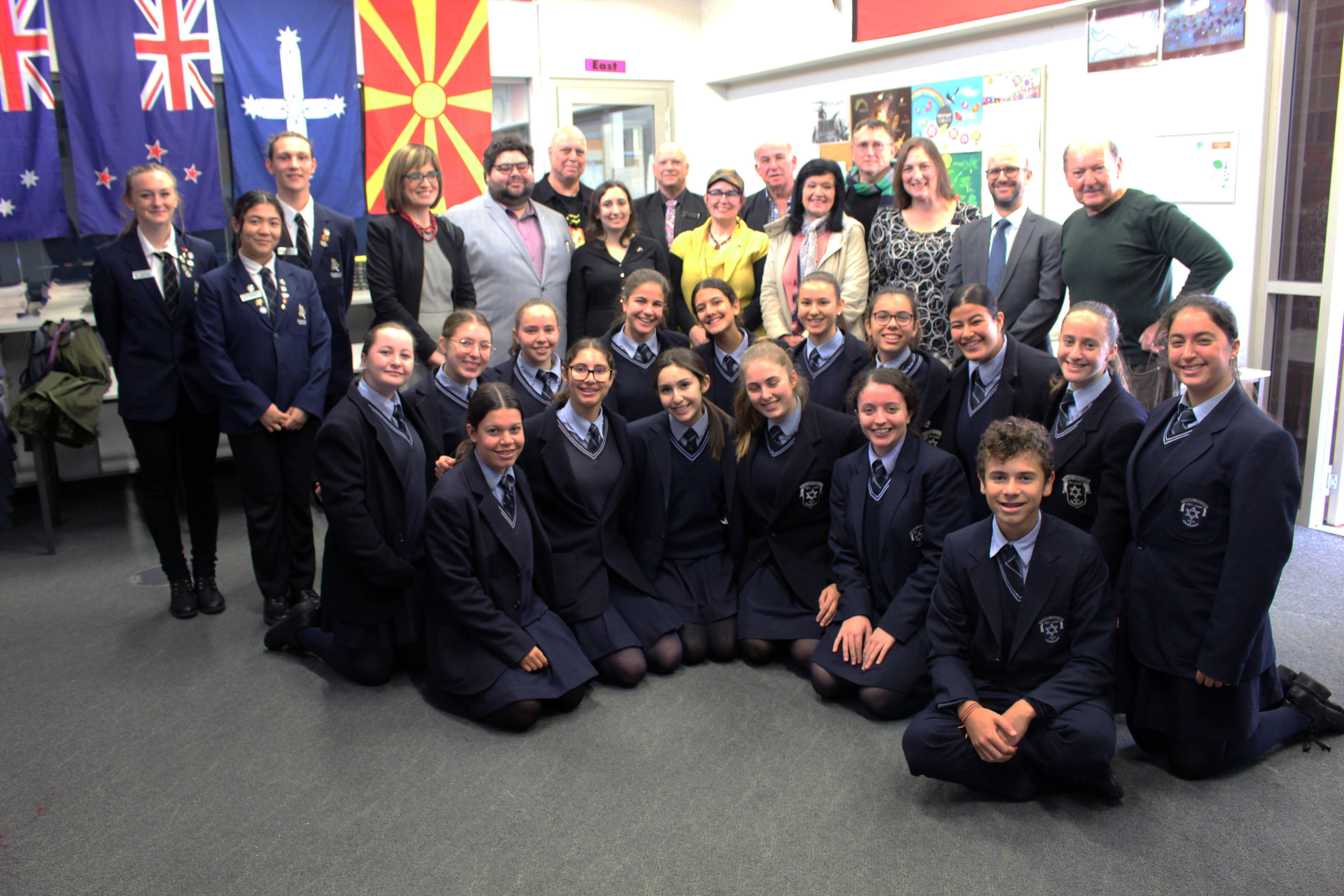


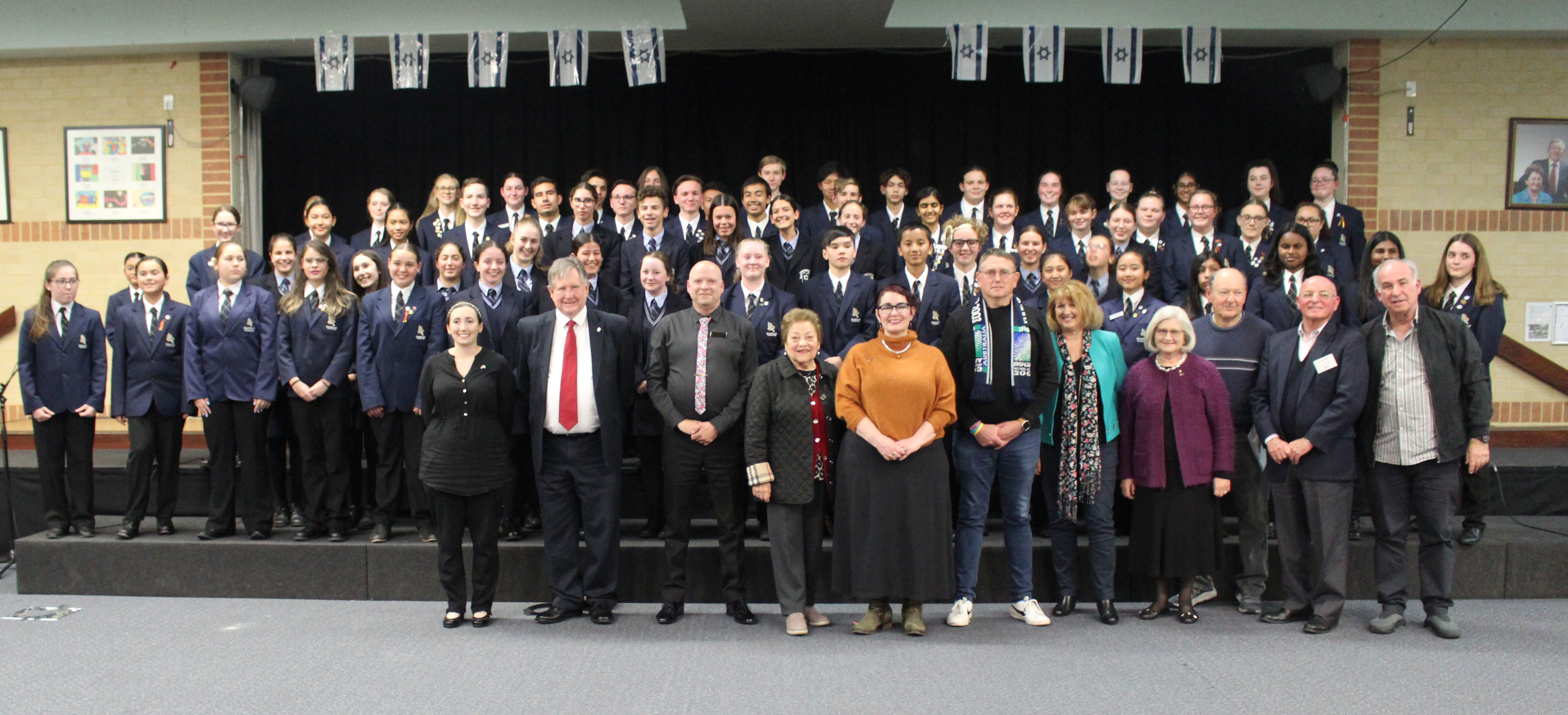

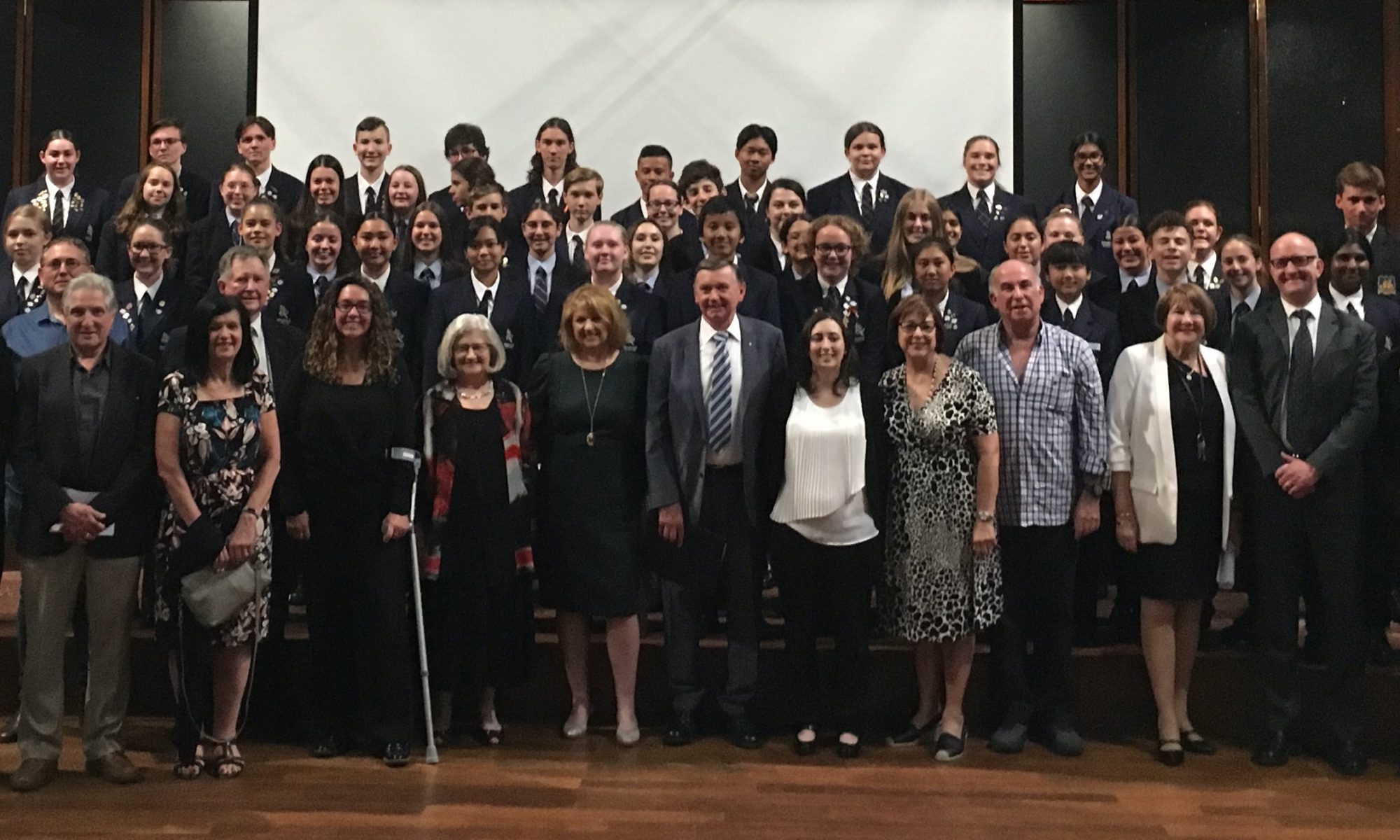


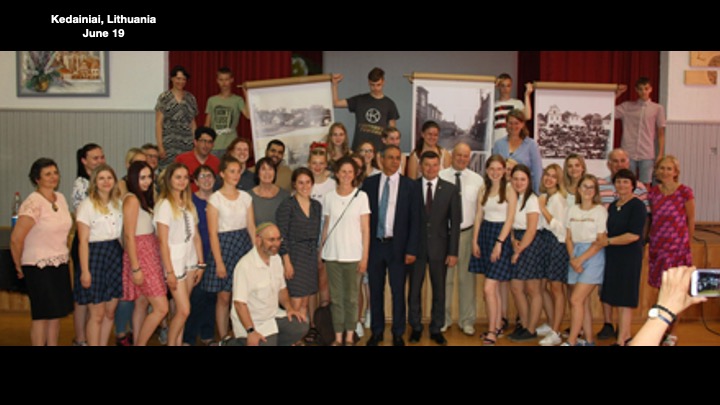

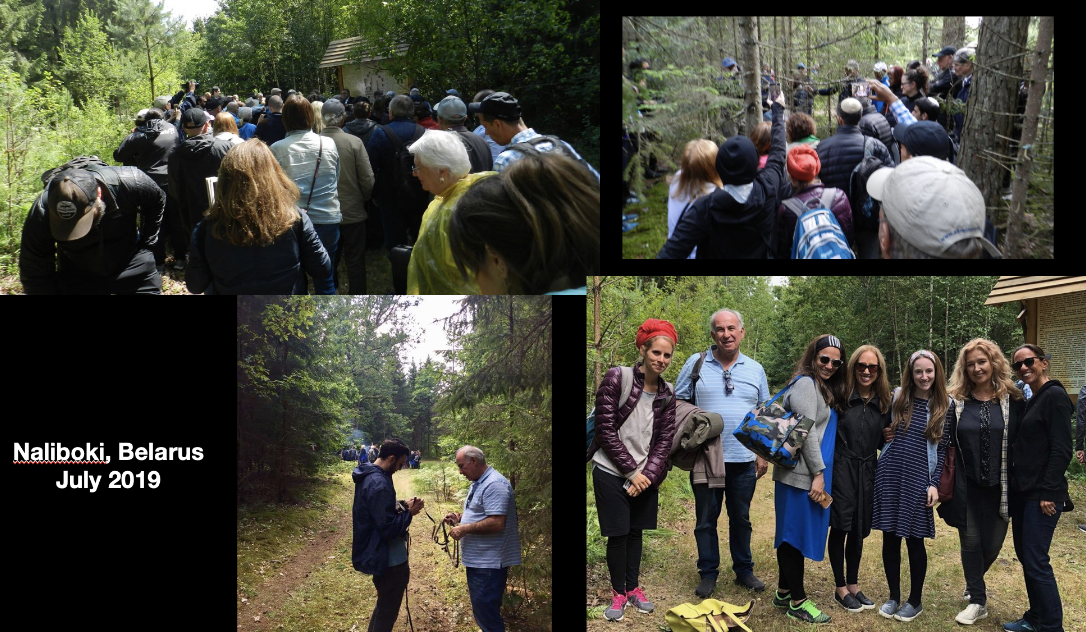

 Ralph Salinger & Michael Leiserowitz in Warsaw
Ralph Salinger & Michael Leiserowitz in Warsaw

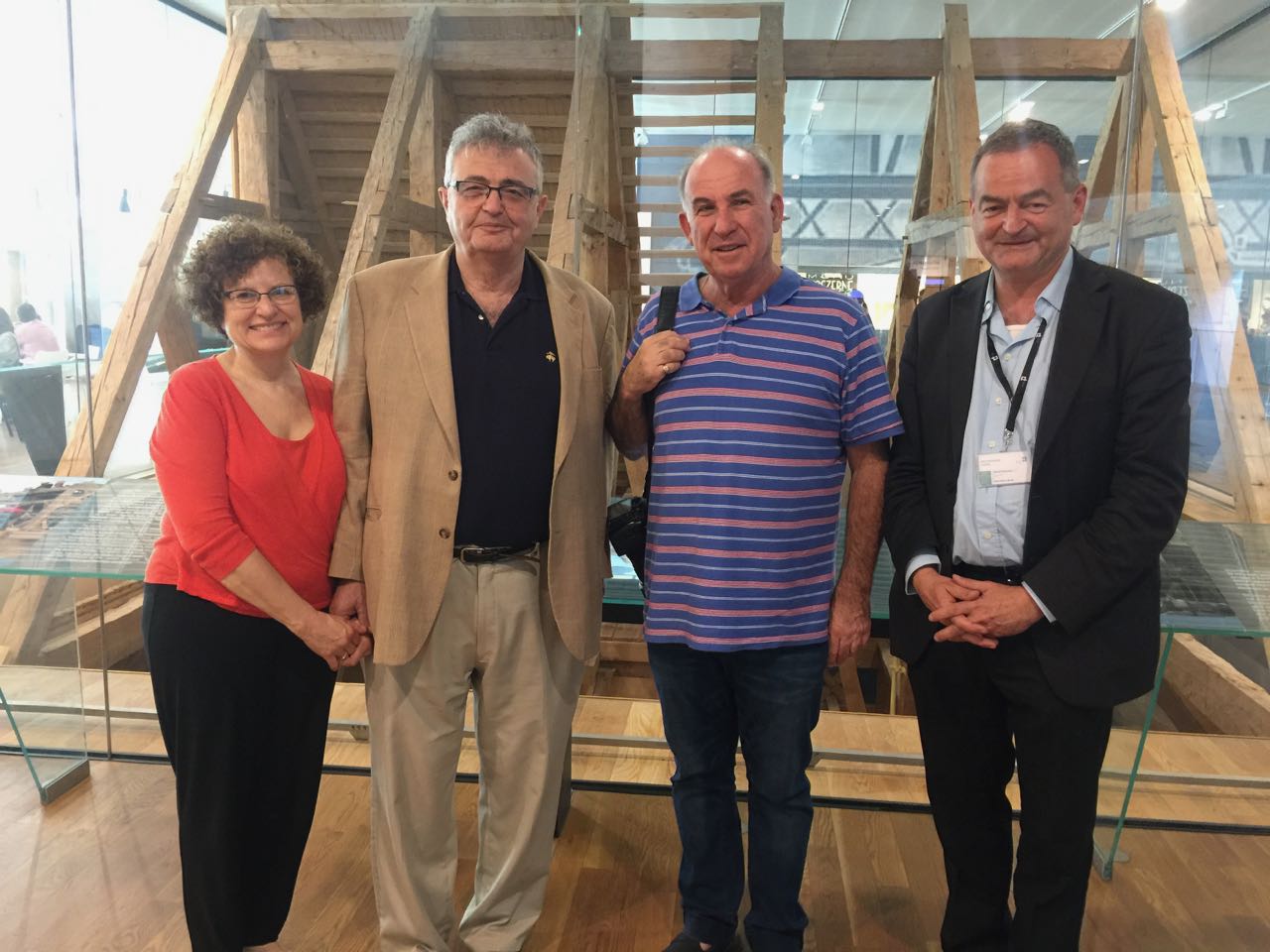
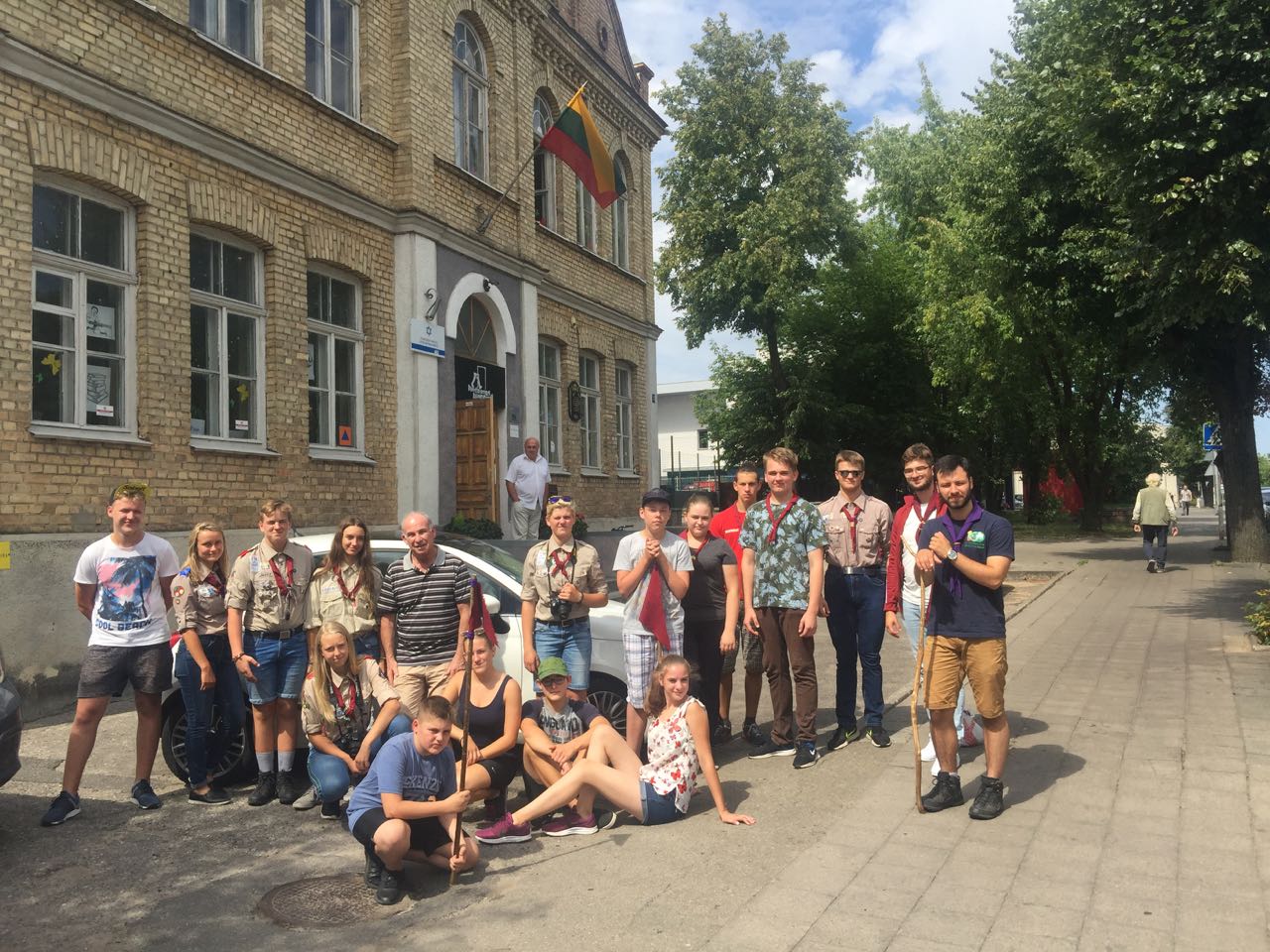
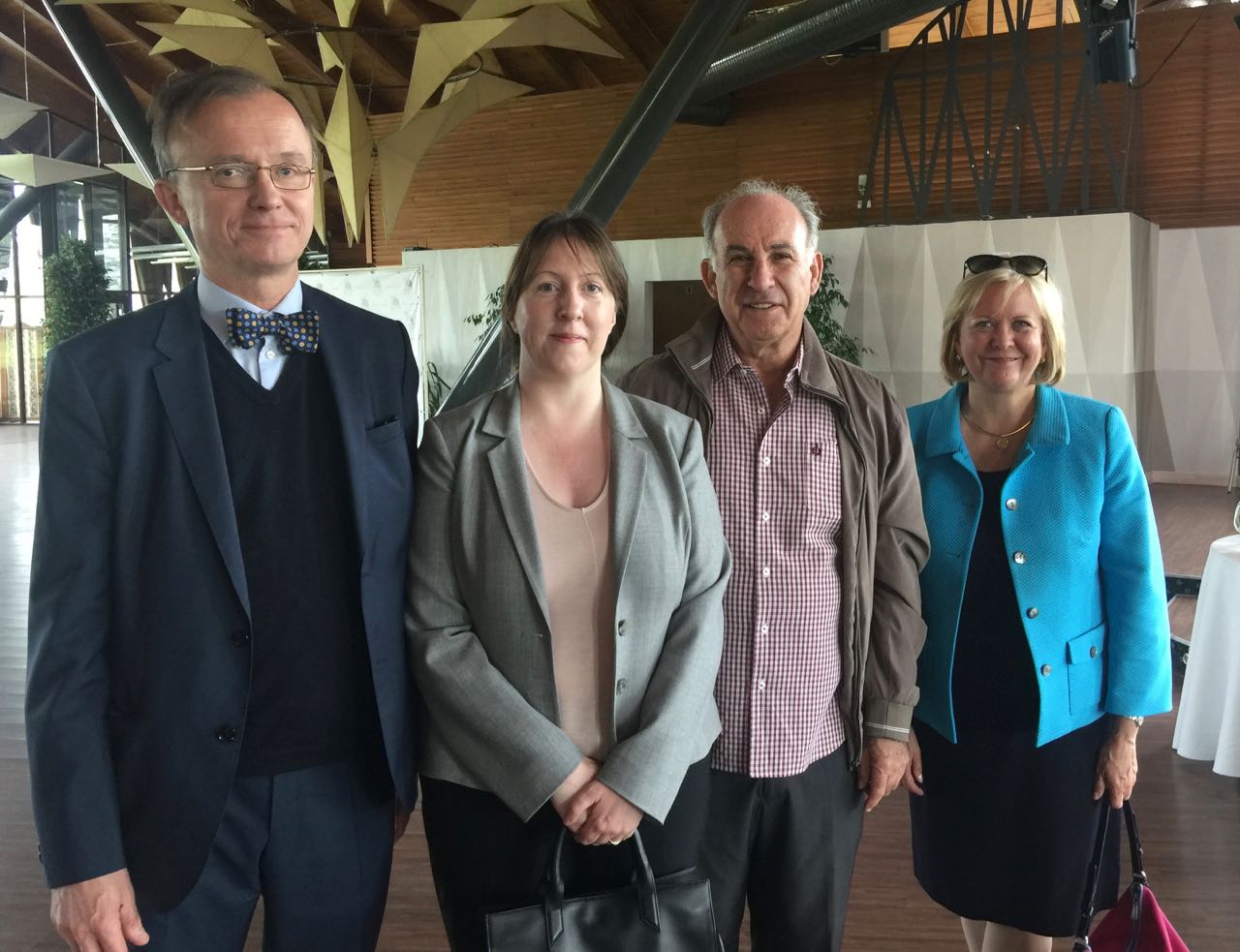
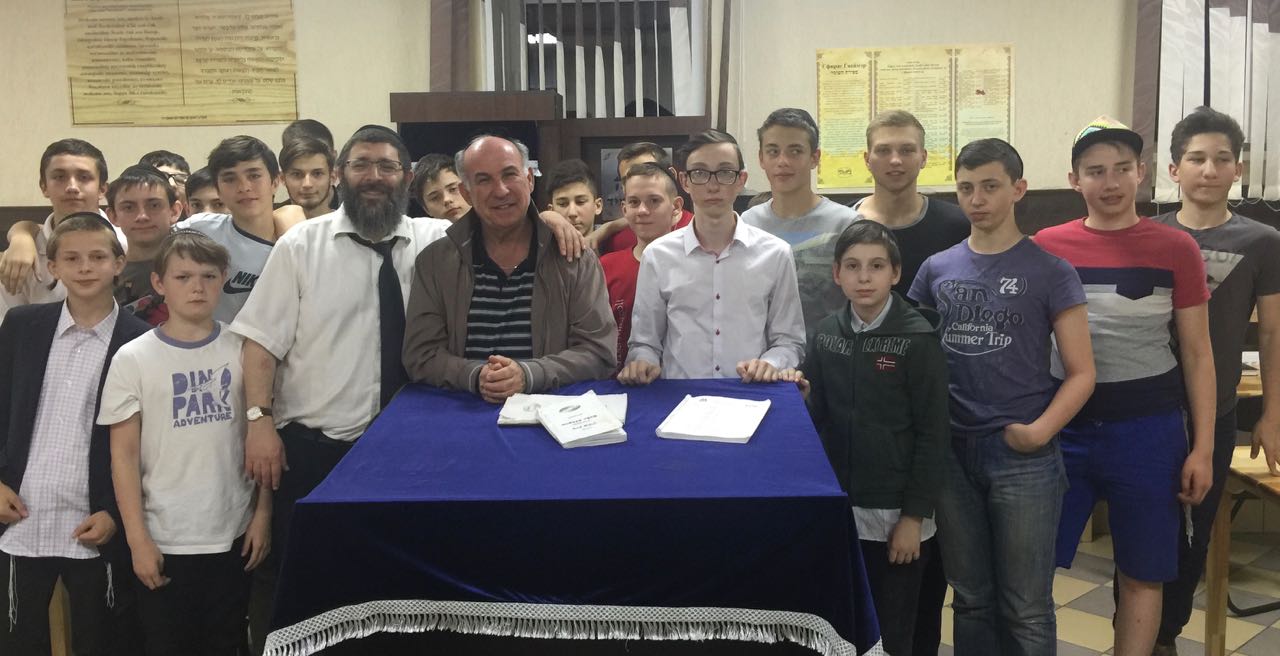

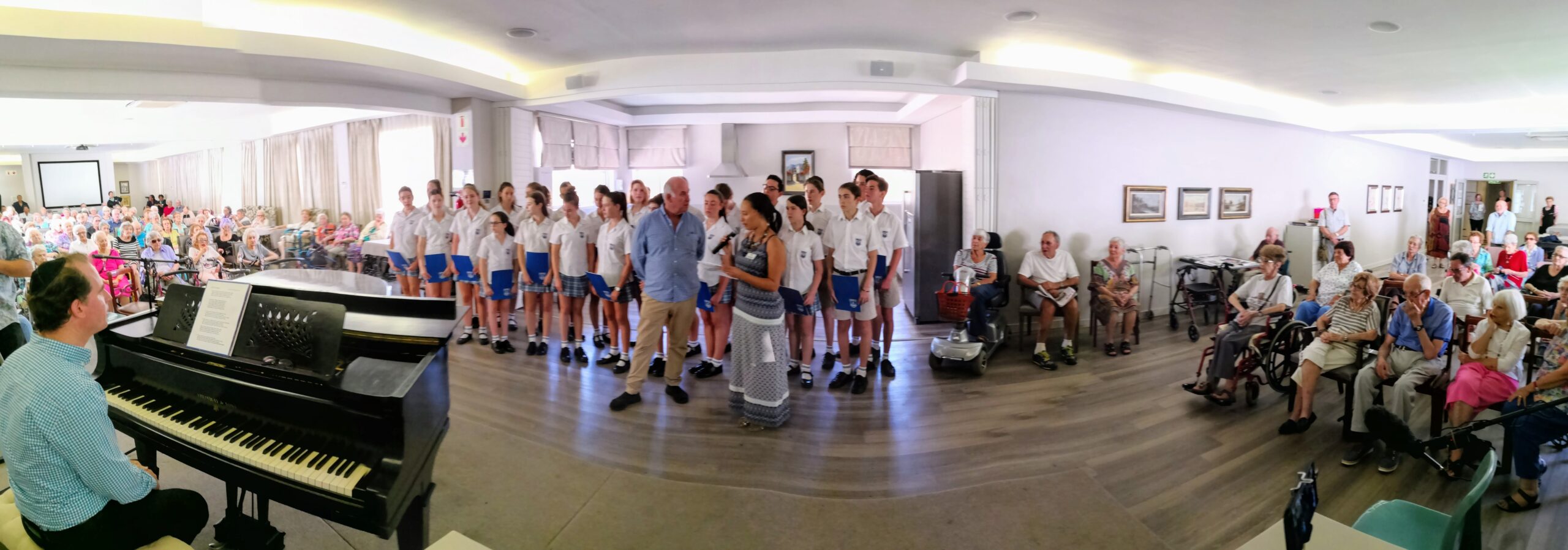
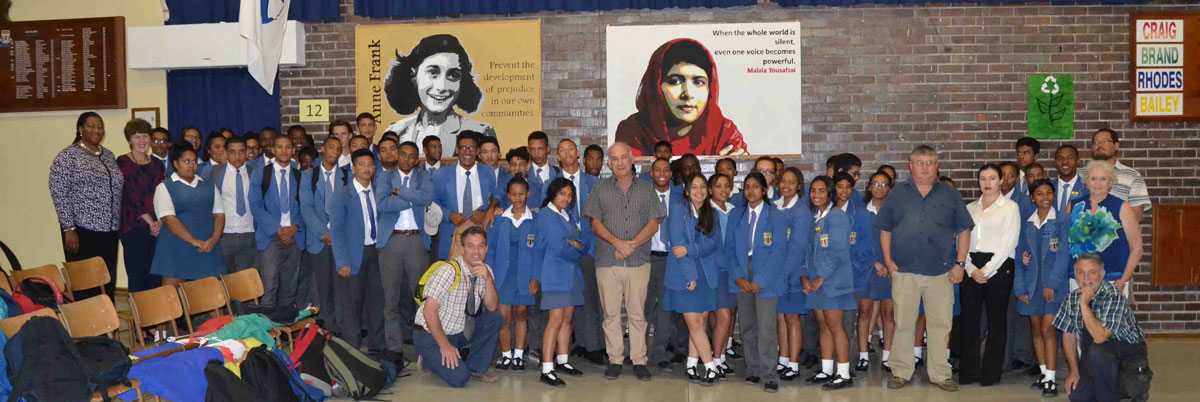 Muizenberg SH, South Africa
Muizenberg SH, South Africa


Apr 12, 2021
Nance Adler is a Jewish educator. She is a Teachers Fellow at the US Holocaust Memorial Museum as well as a Powell Fellow at the Holocaust Center for Humanity in Seattle. She is the educator and curriculum designer for WE ARE HERE! Foundation for Upstanders. Nance has received many accolades and awards and is published both for pedagogy and curriculum development.
She has taught for the past 16 years at the Jewish Day School of Metropolitan Seattle where she focuses on inspiring a love of Judaism and using one’s “Jewish lenses” as a way to approach the world to make it better for all Creation.
Katie and Andrew talk with Nance about what it means to be an “upstander”, the importance of telling resistance stories, and even Holocaust movies. Thank you Nance Adler for being our guest on The Well QA!
Also, watch Nance’s keynote speech in Perth, Australia in 2019 about “What I Teach and Why”: https://www.youtube.com/watch?v=ZdXbdRucP78

